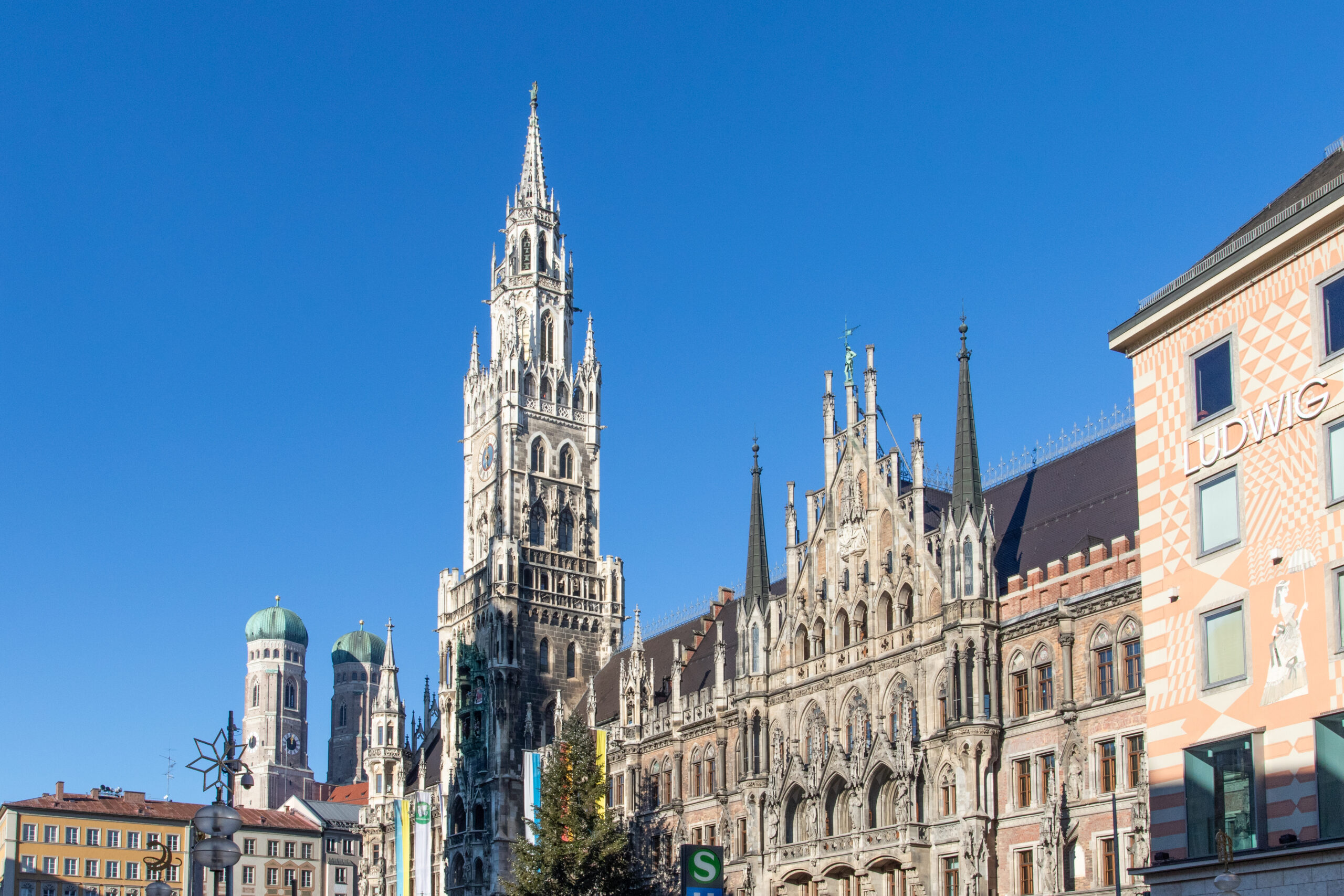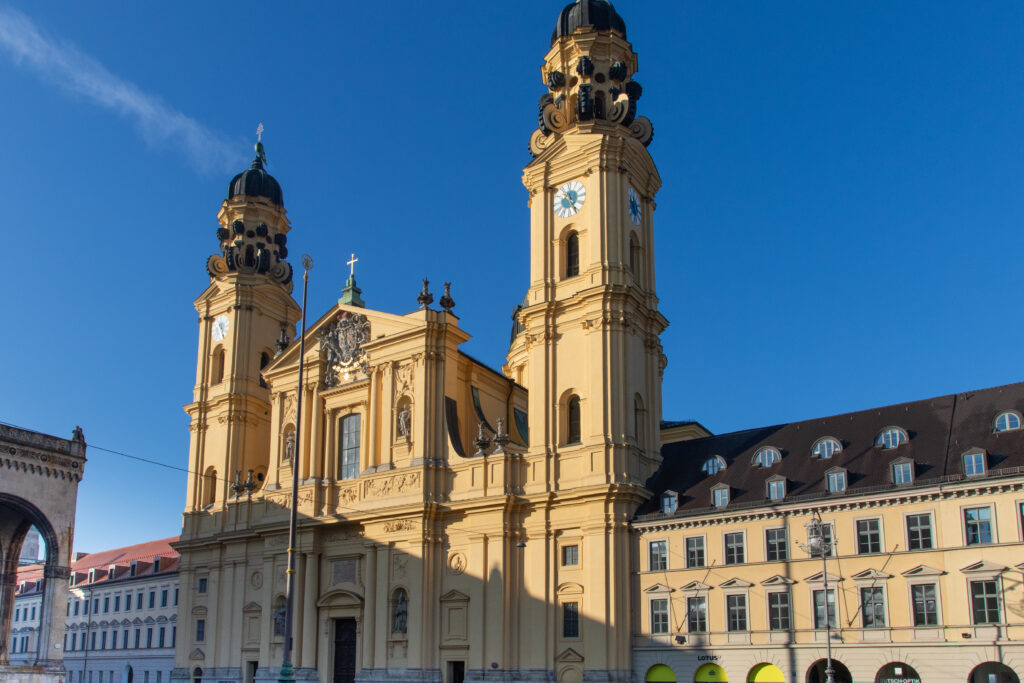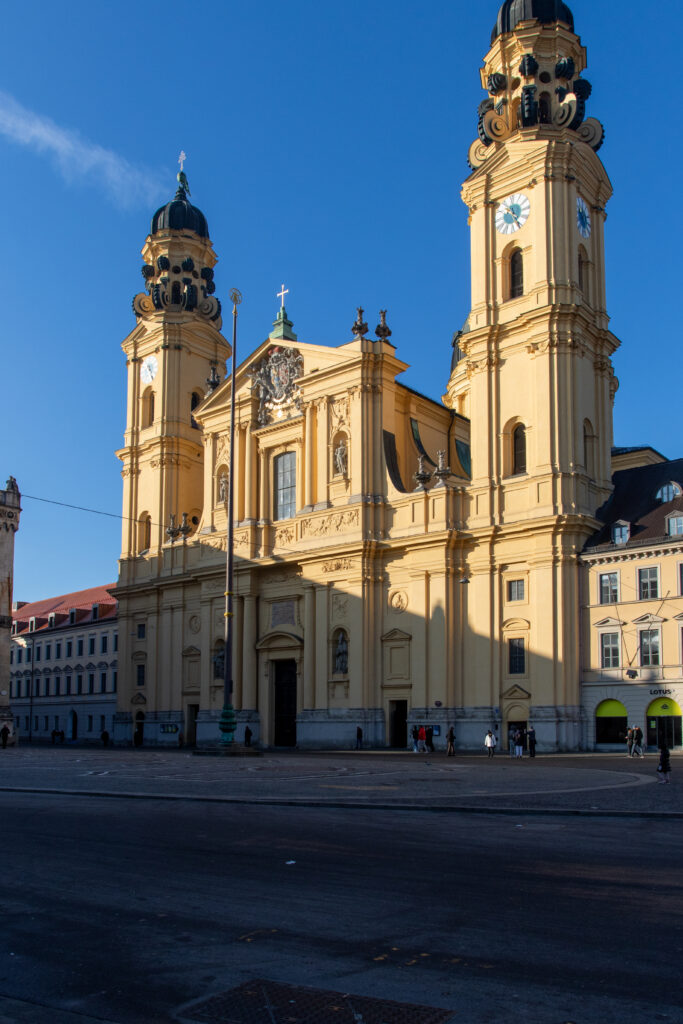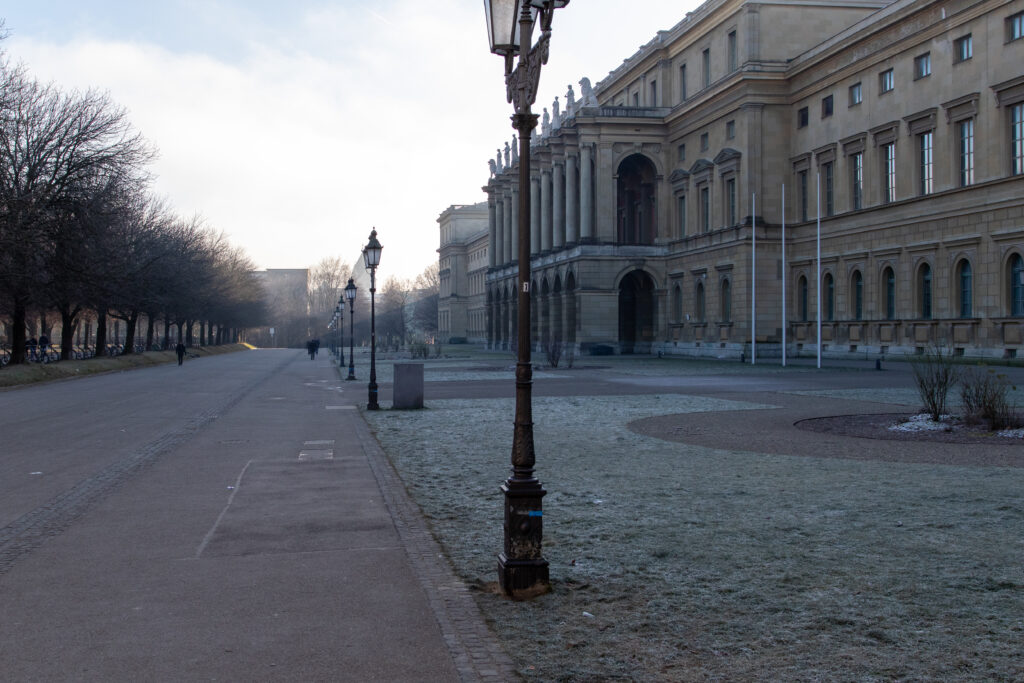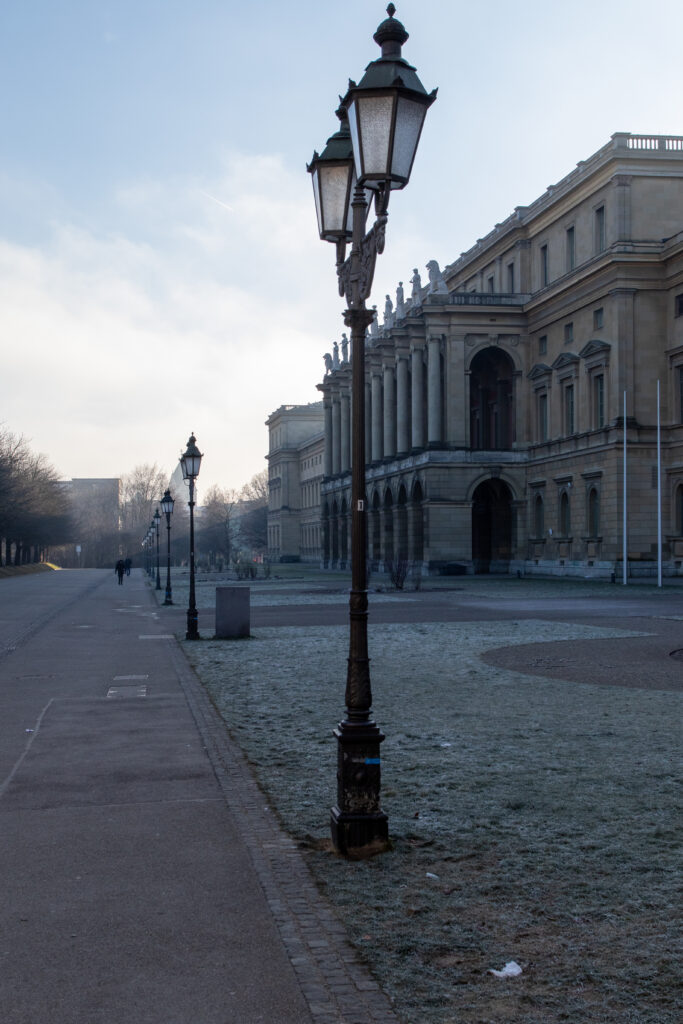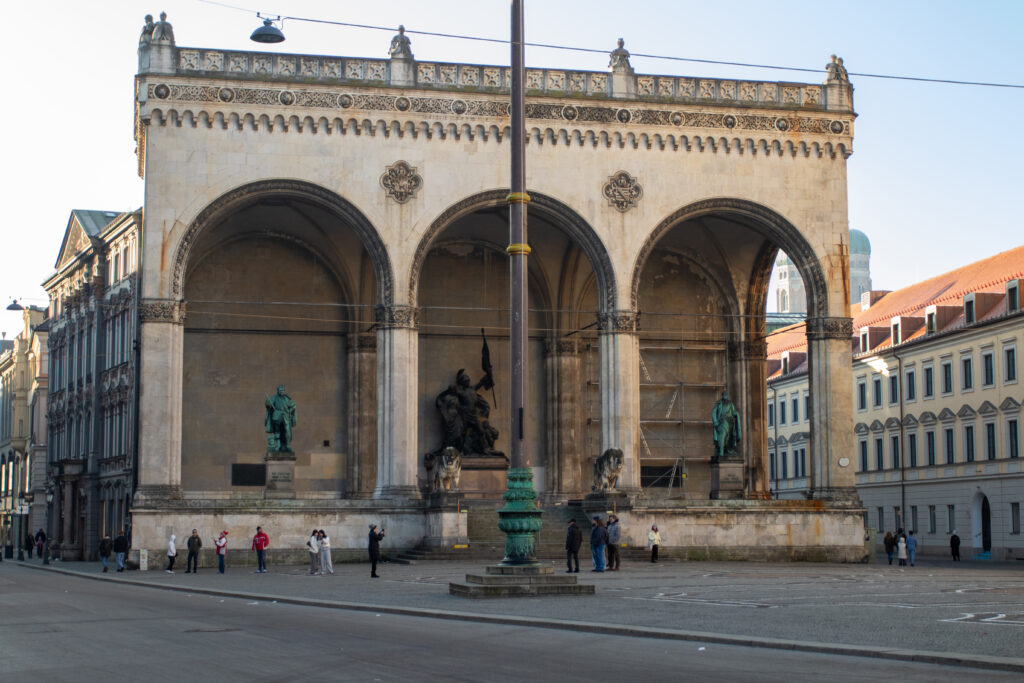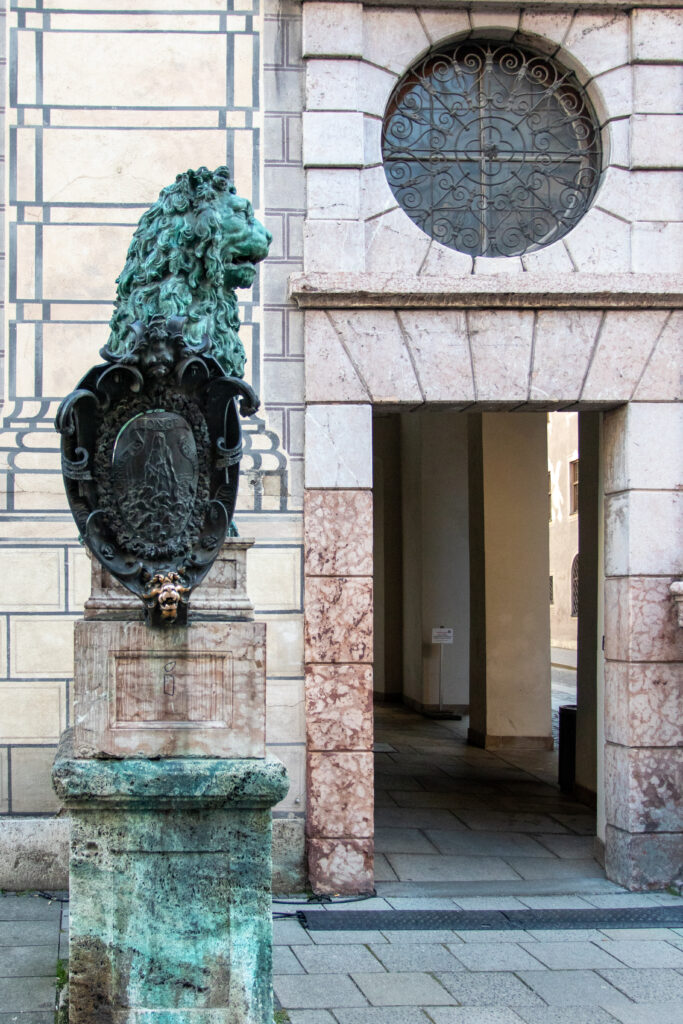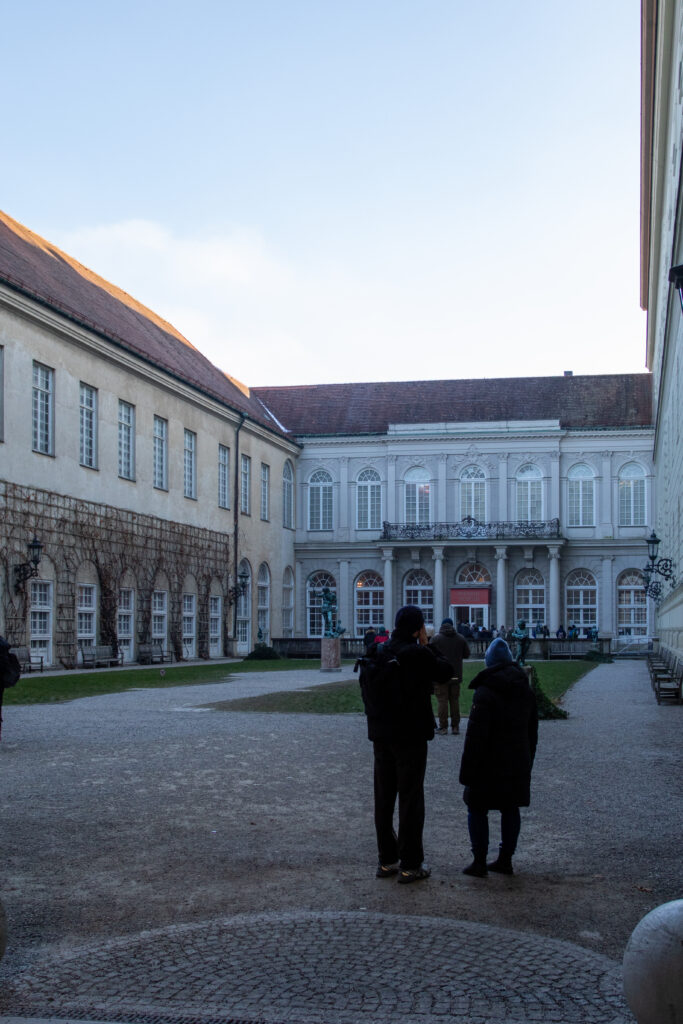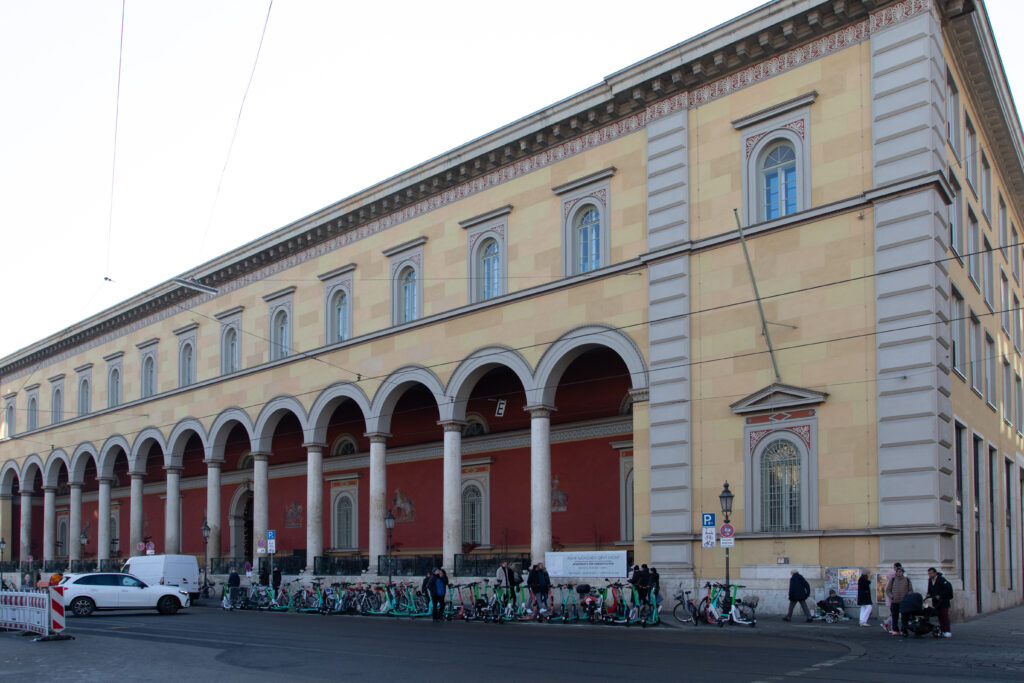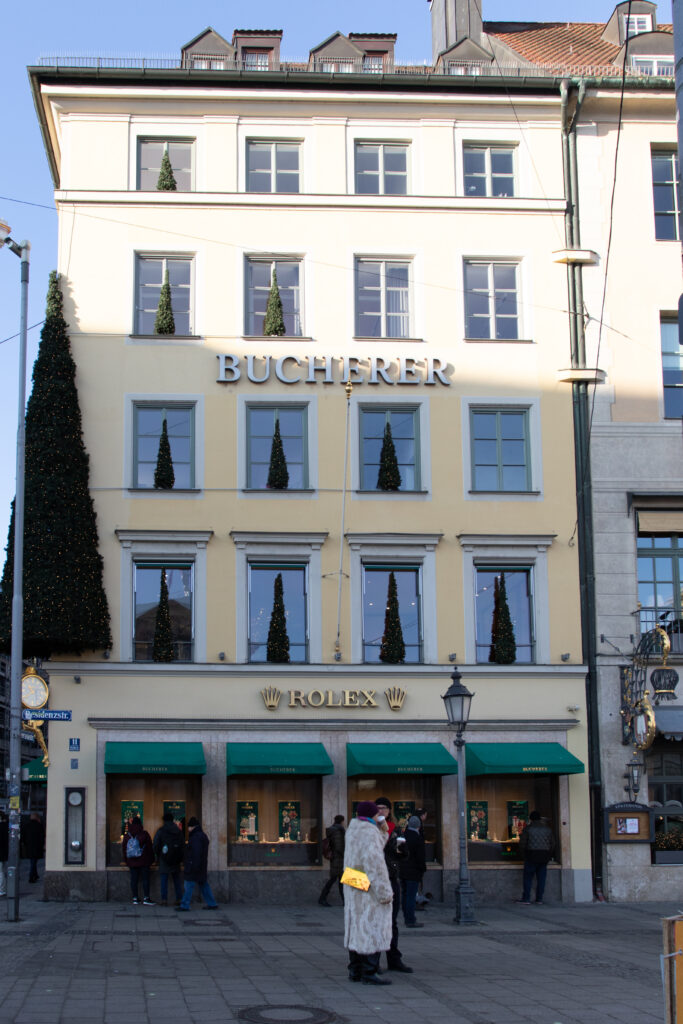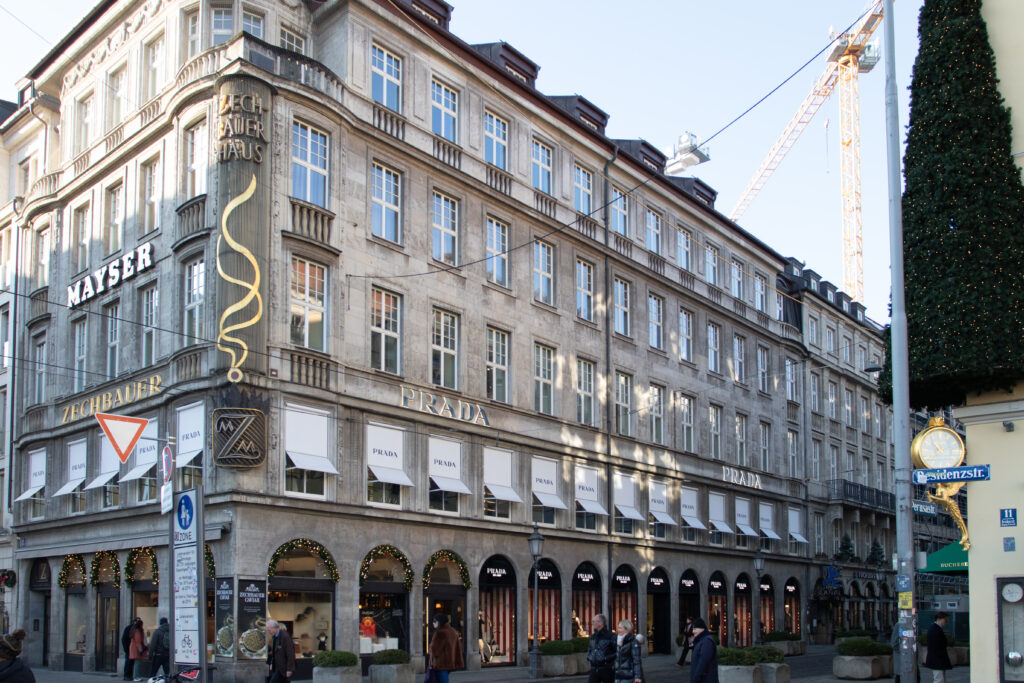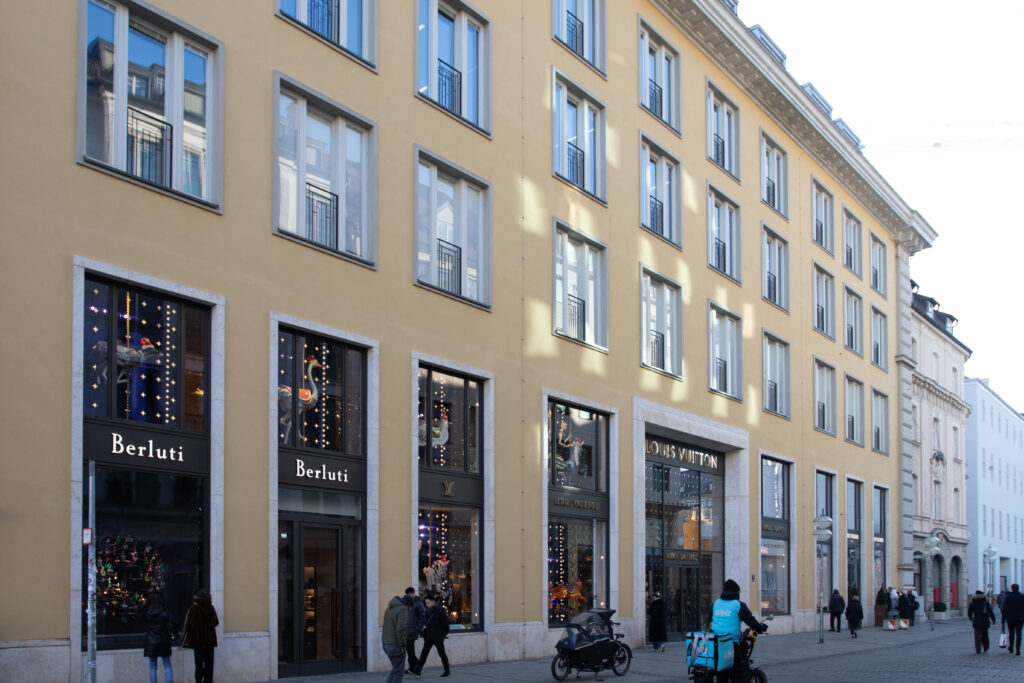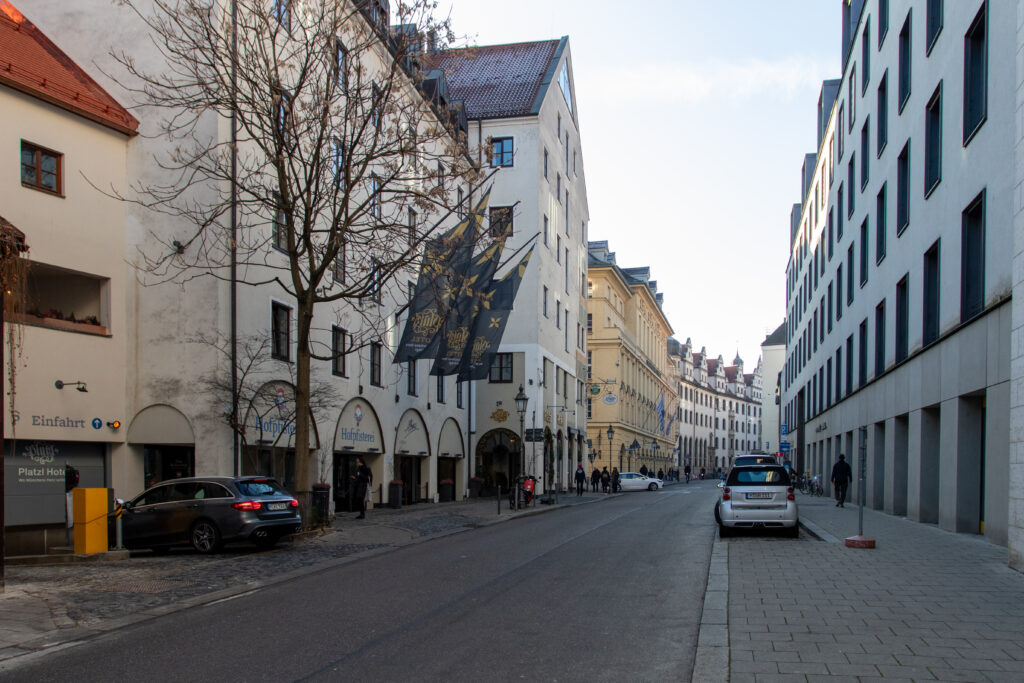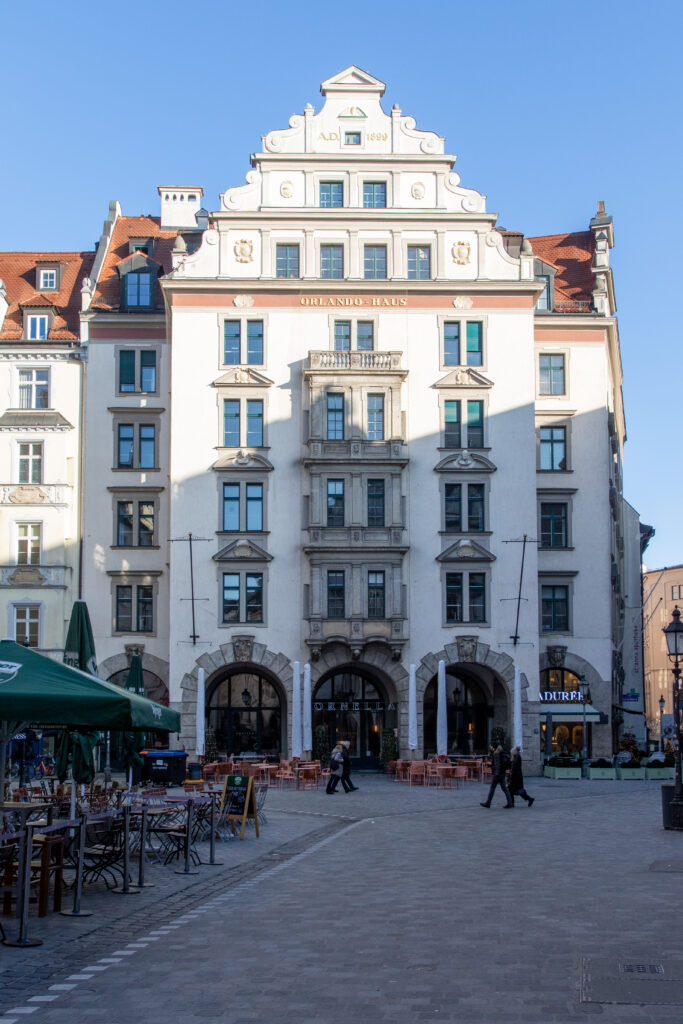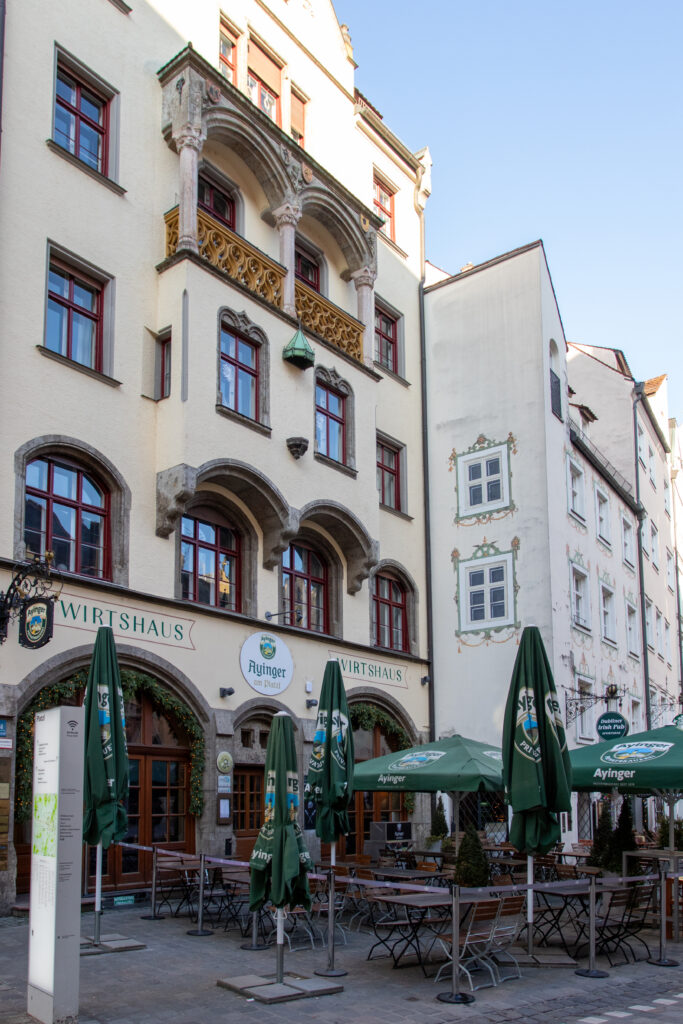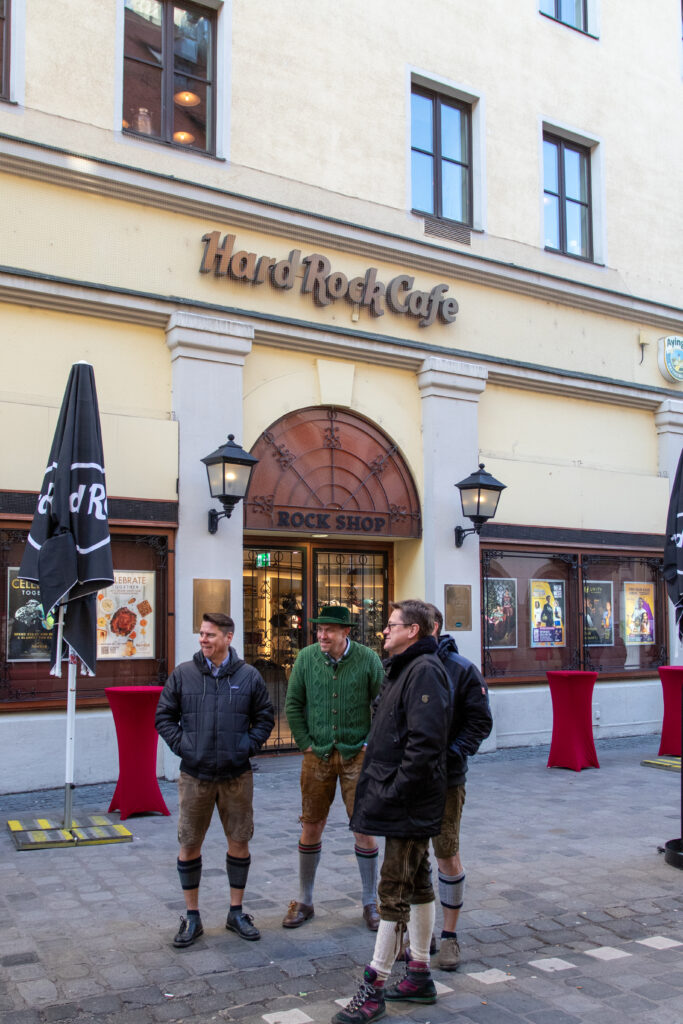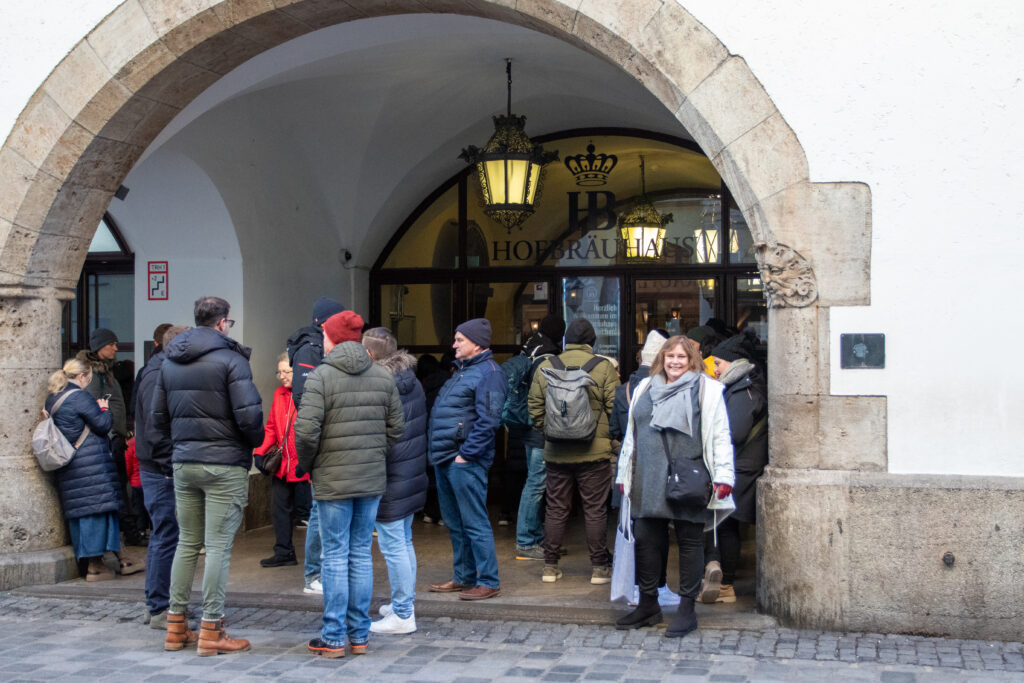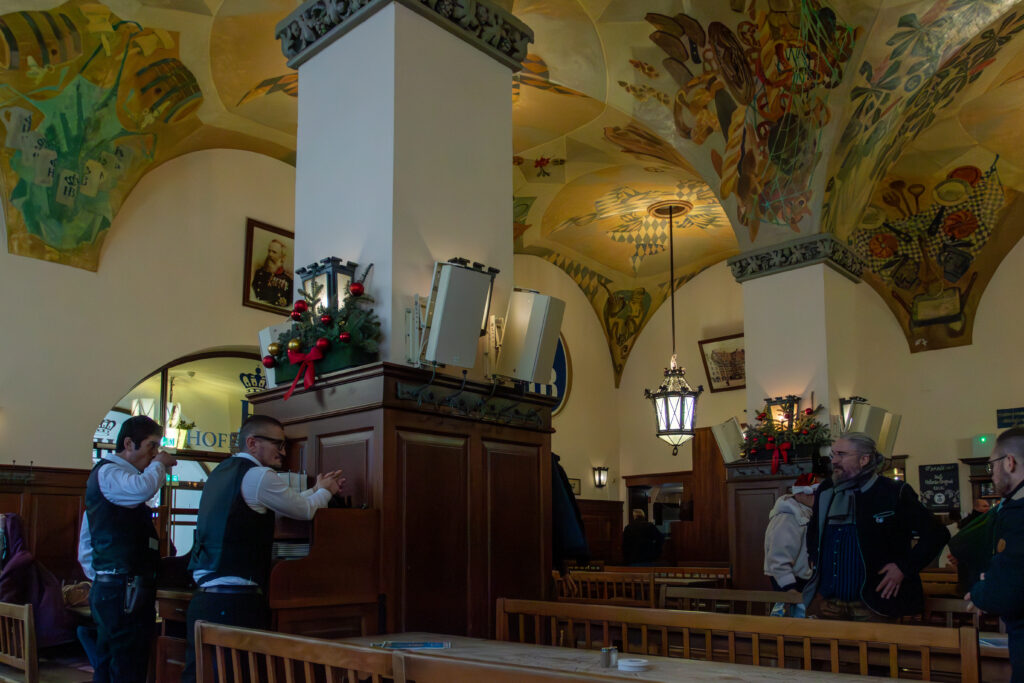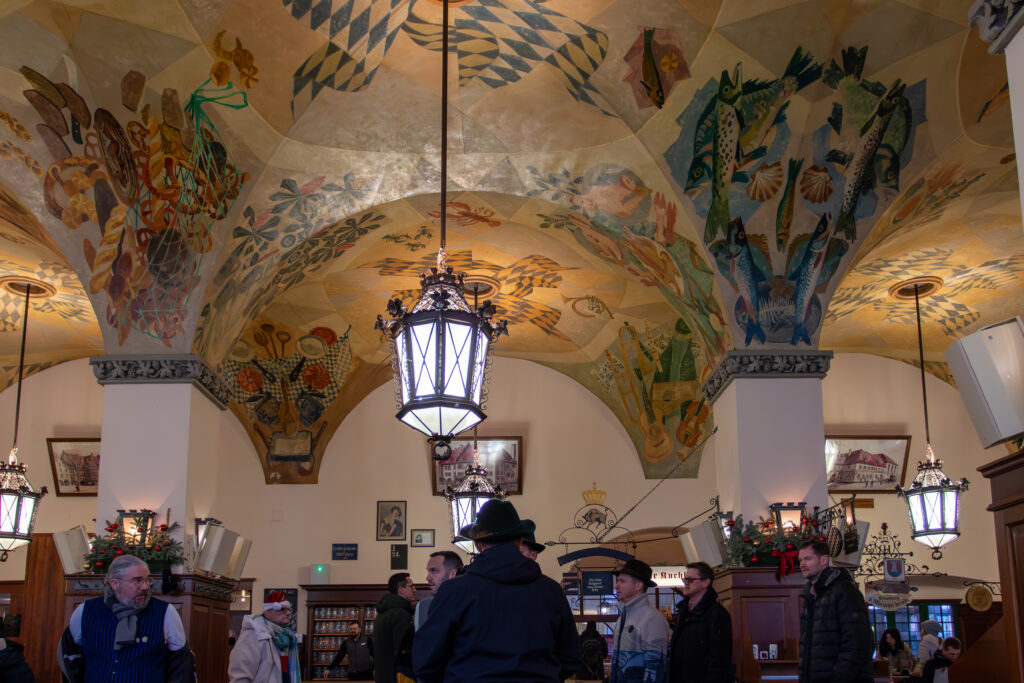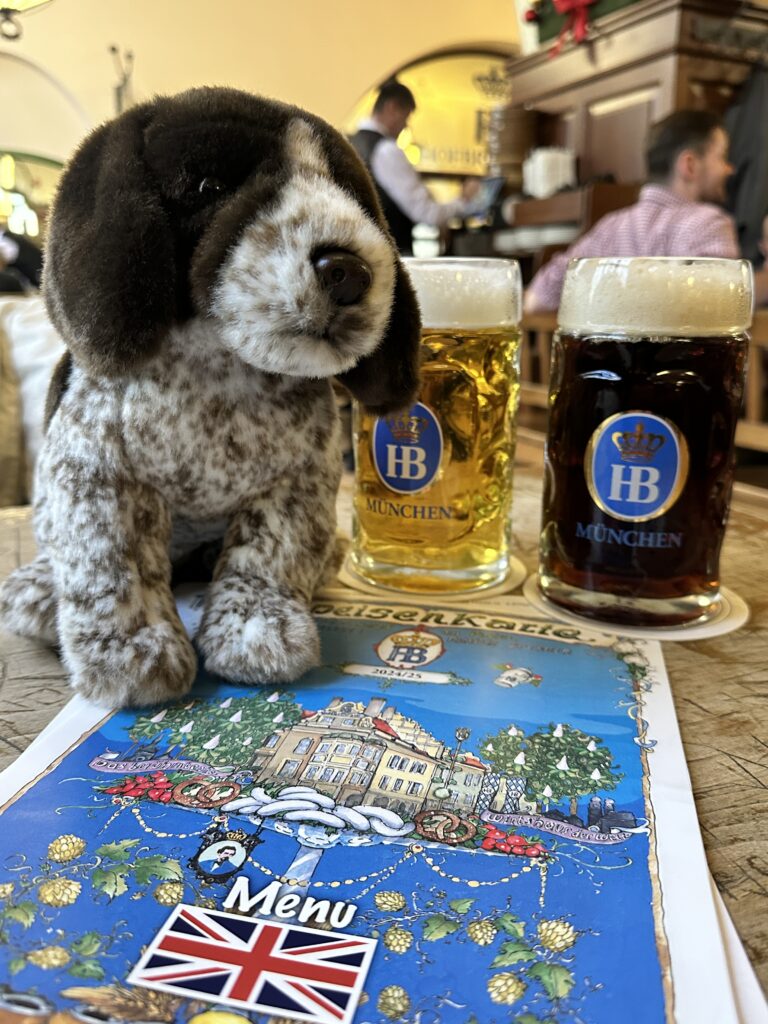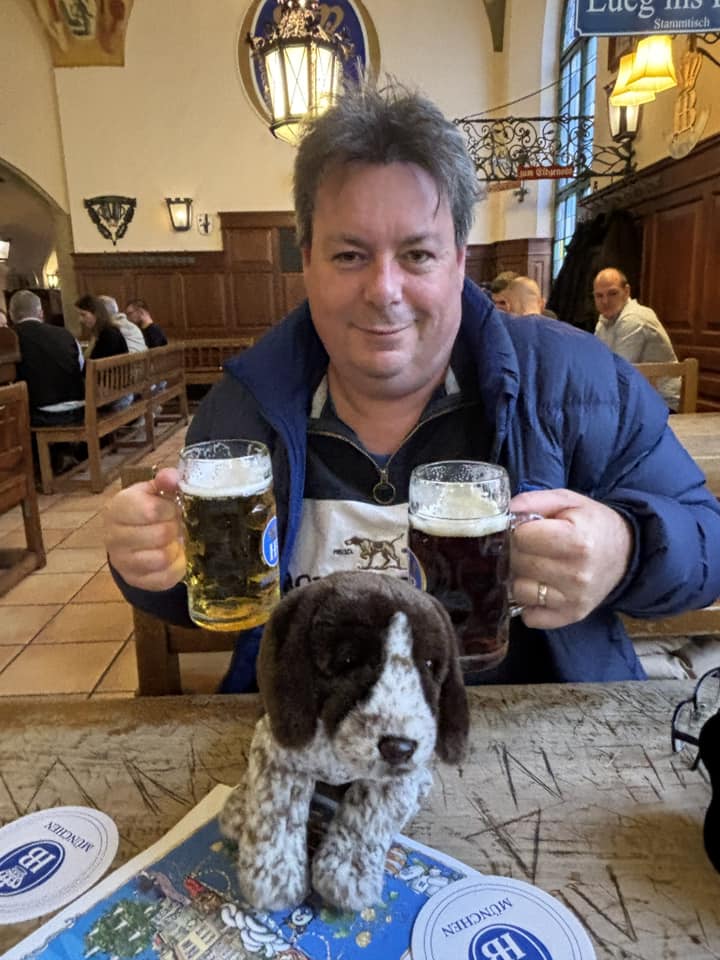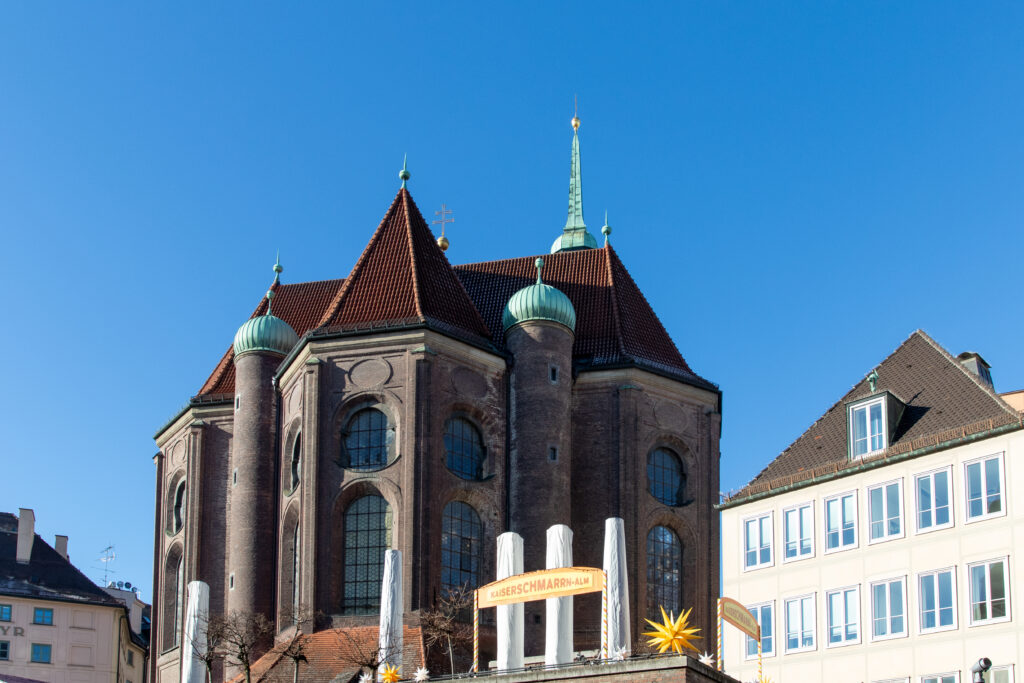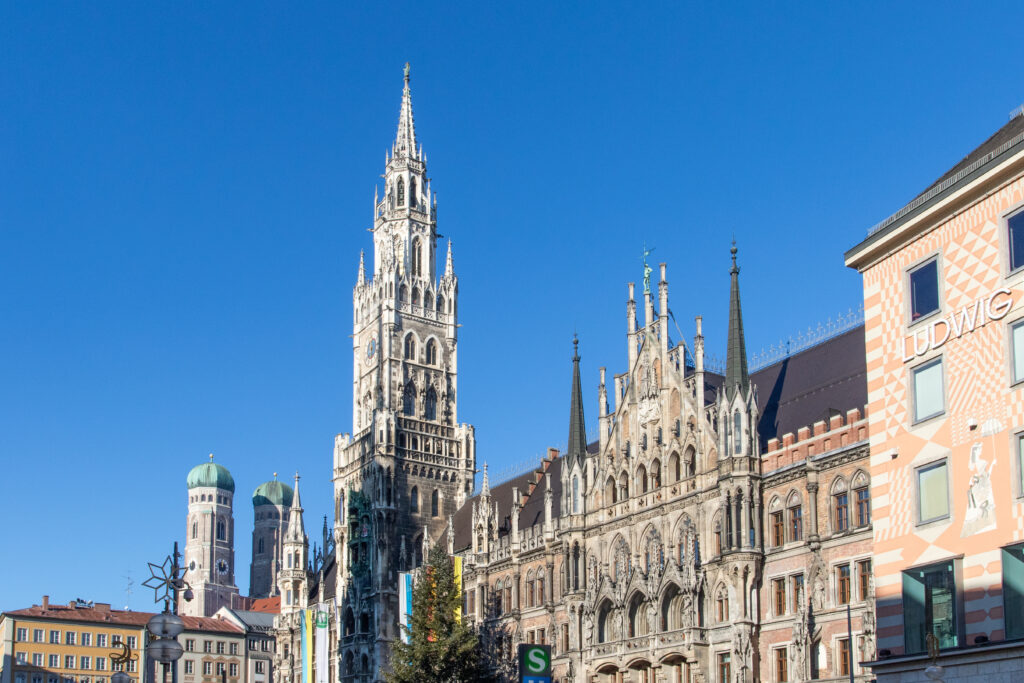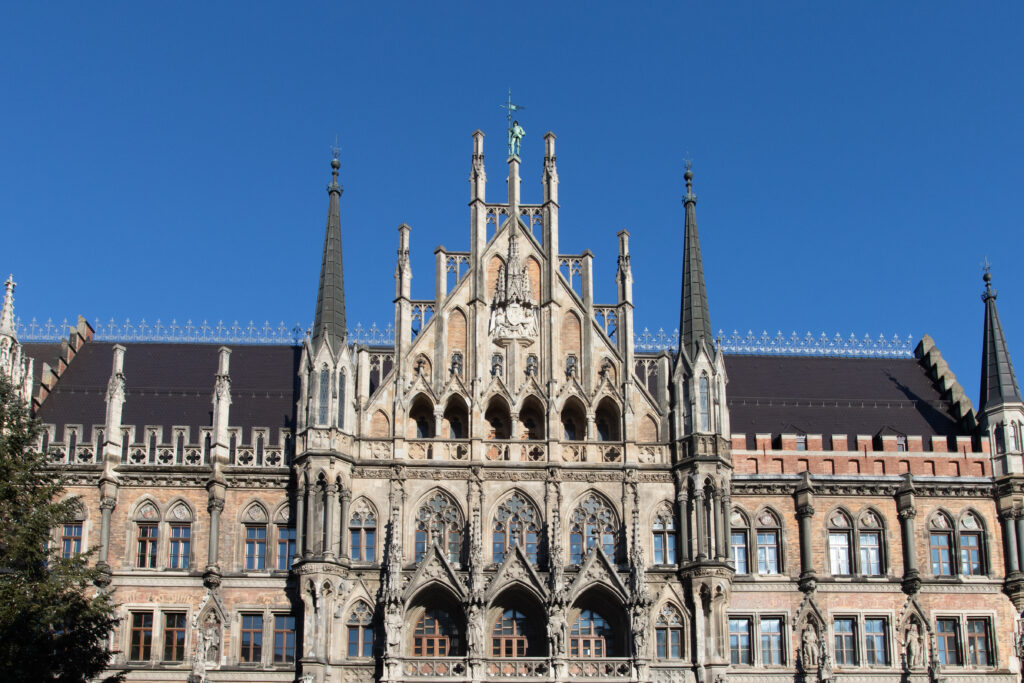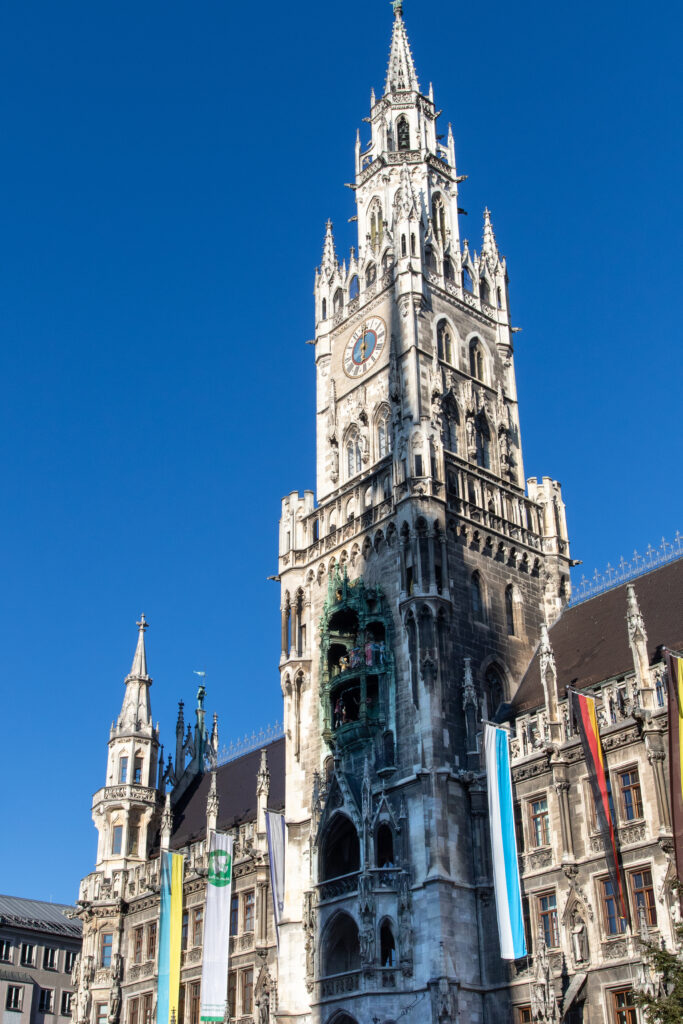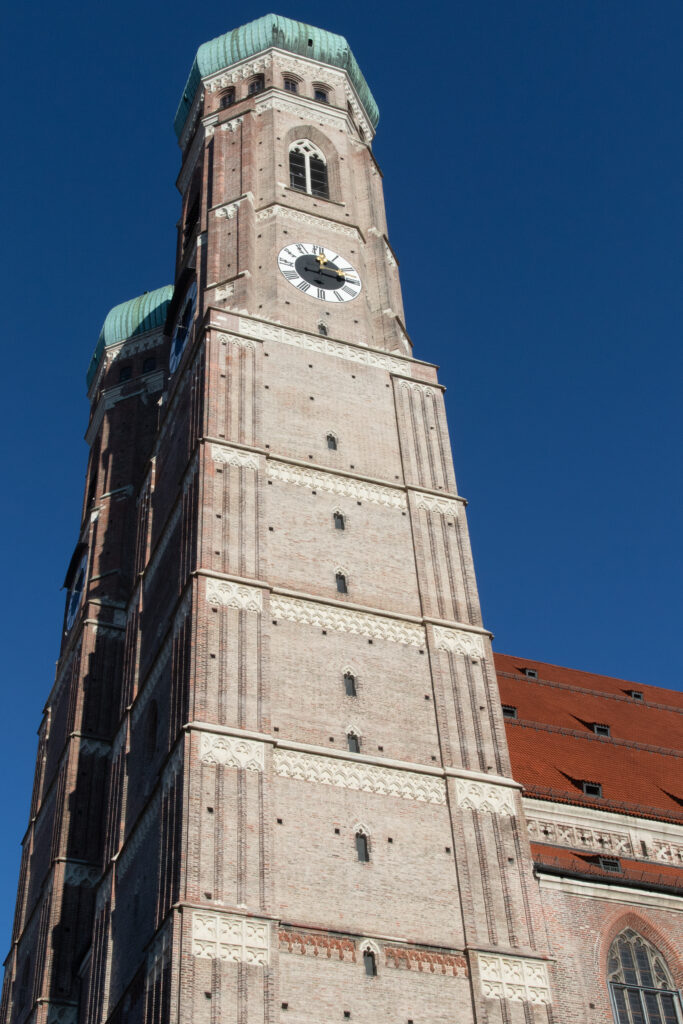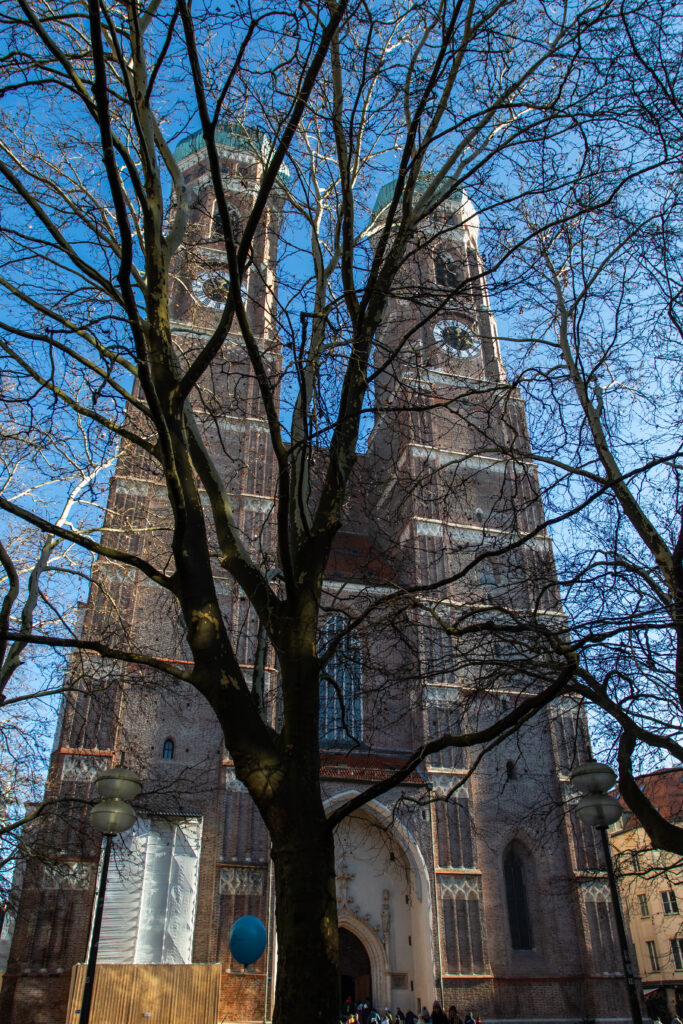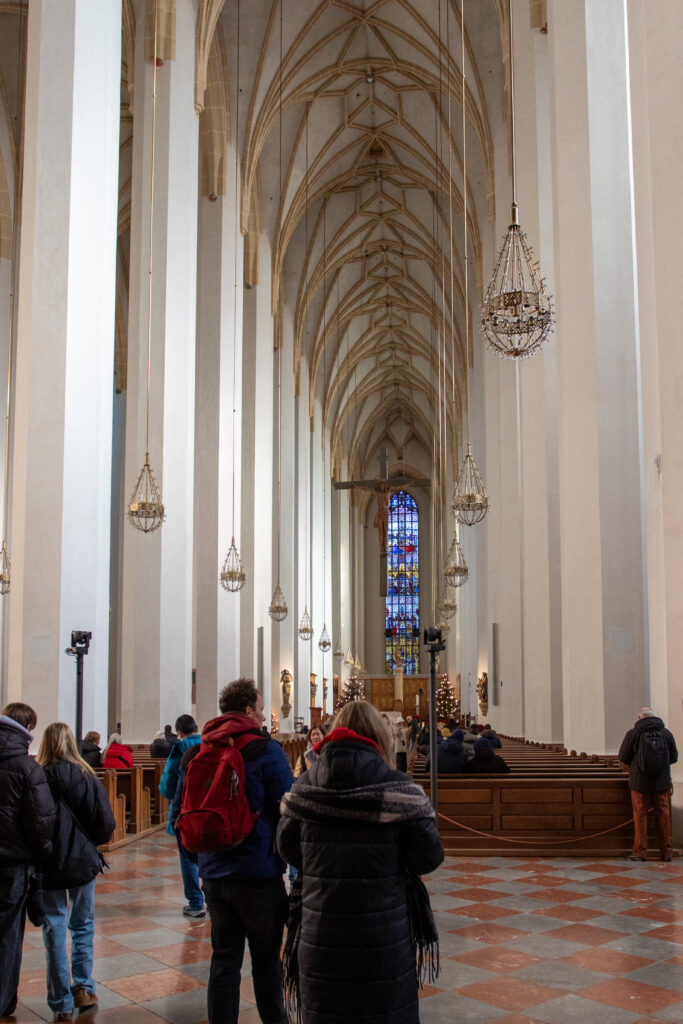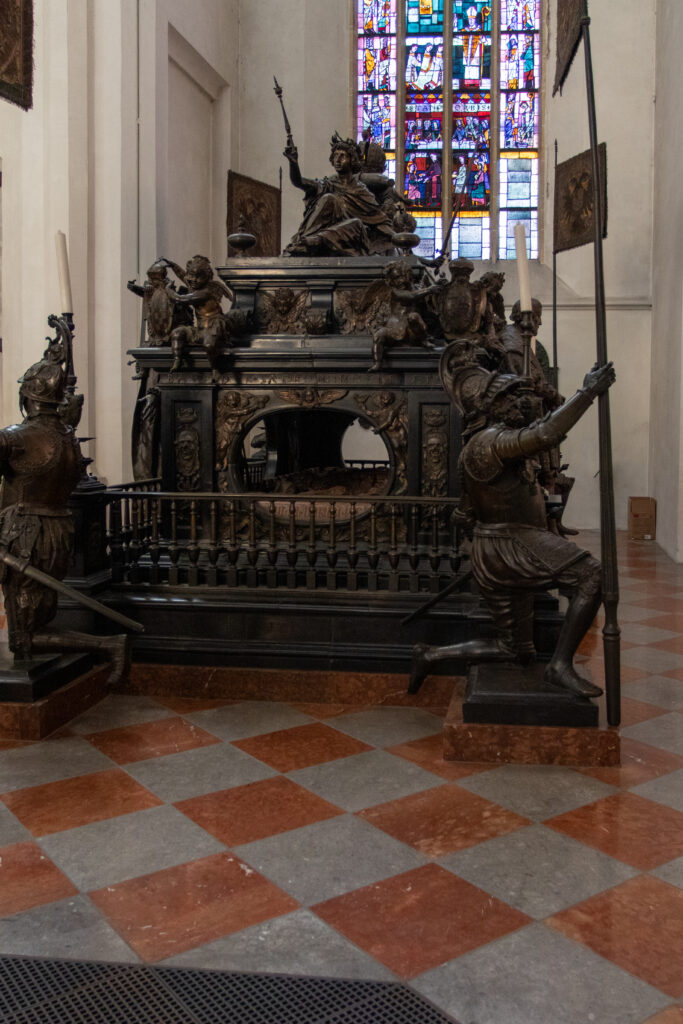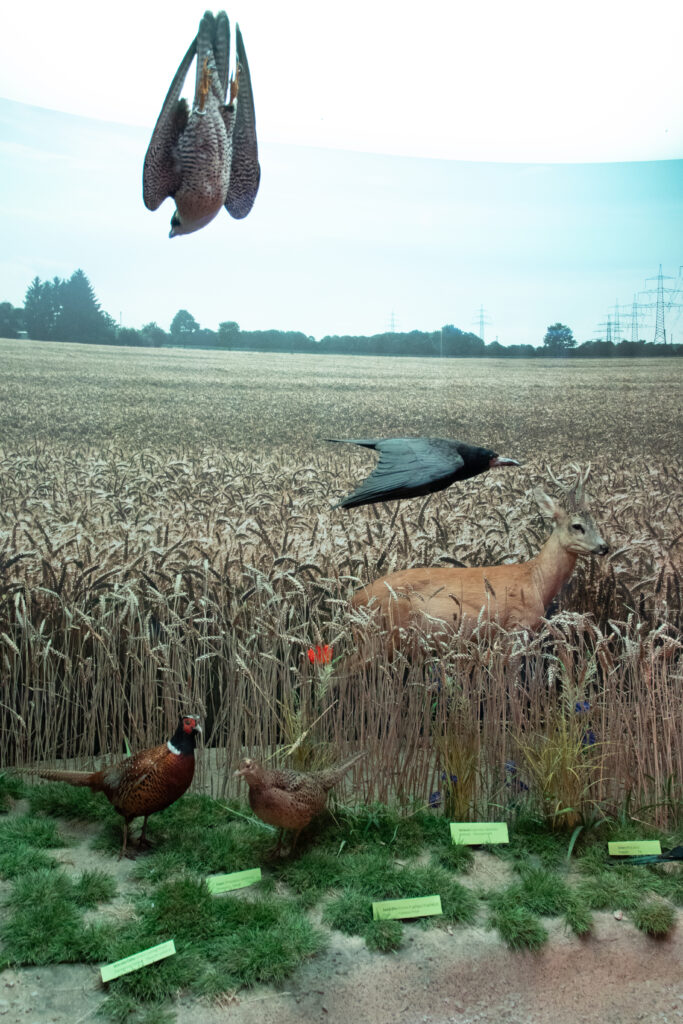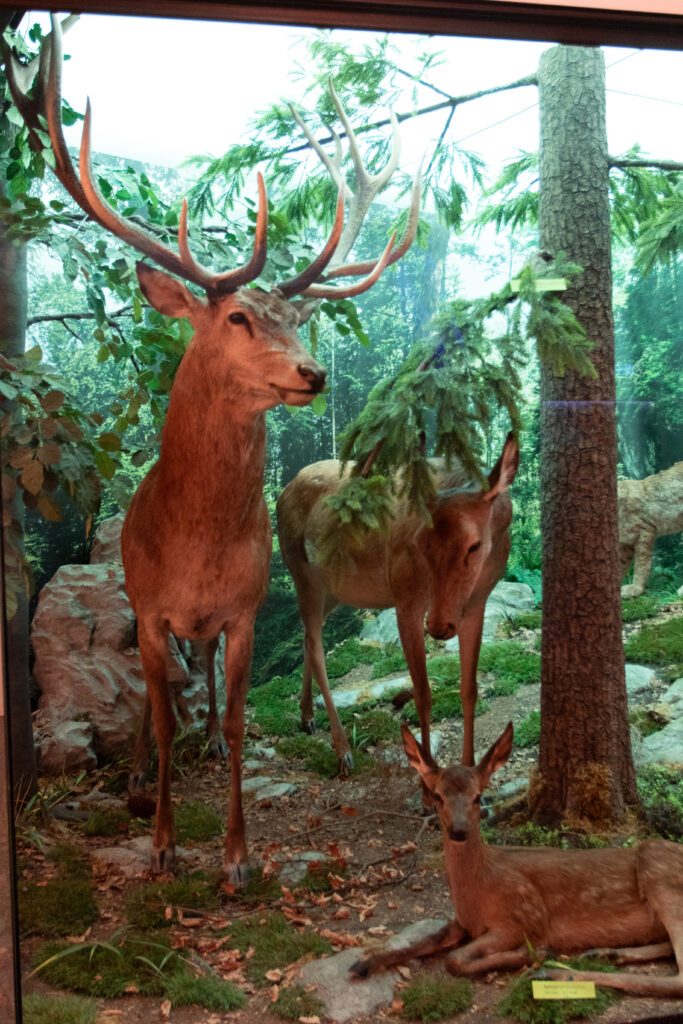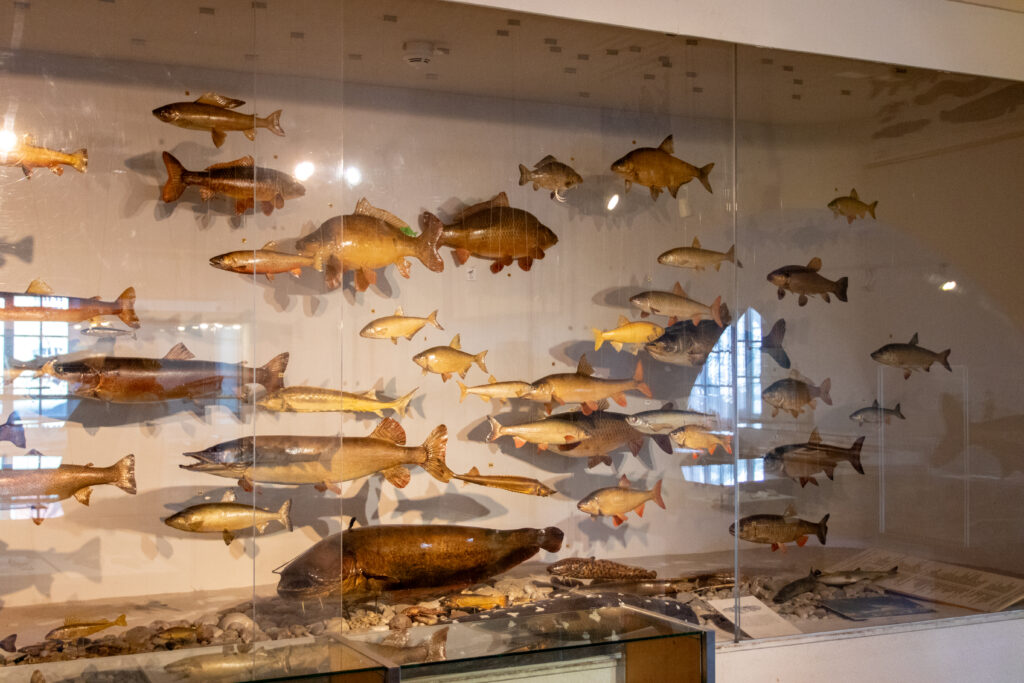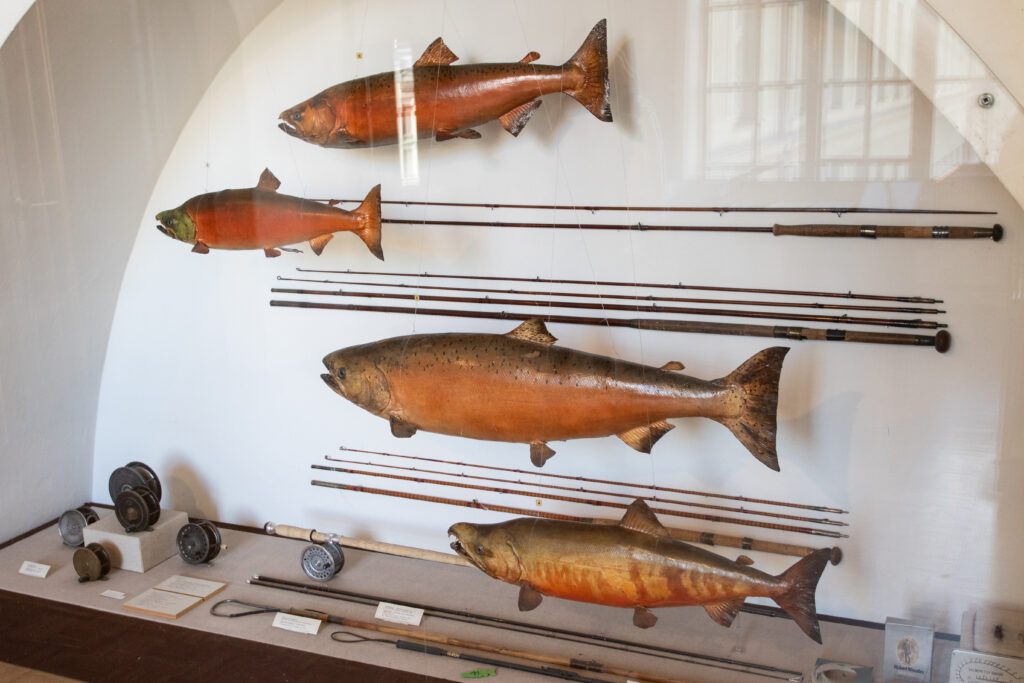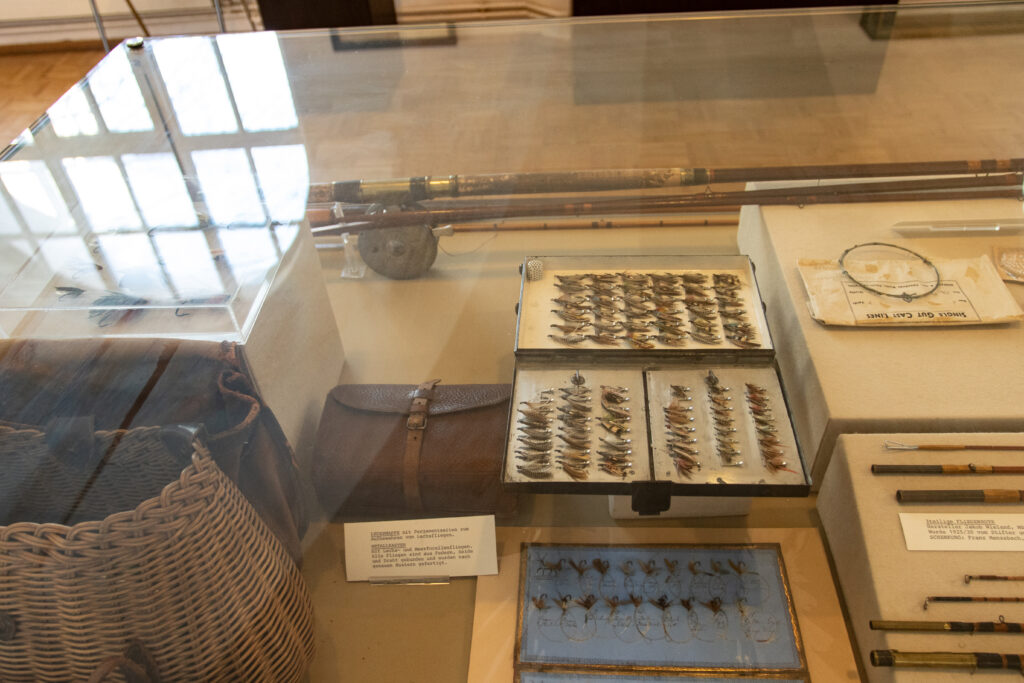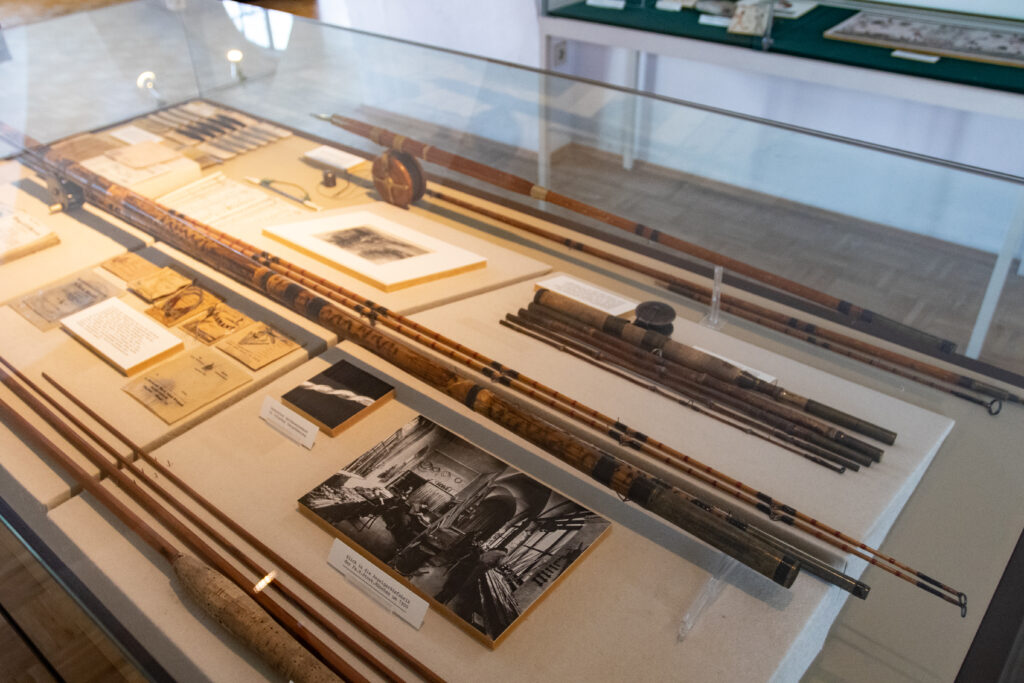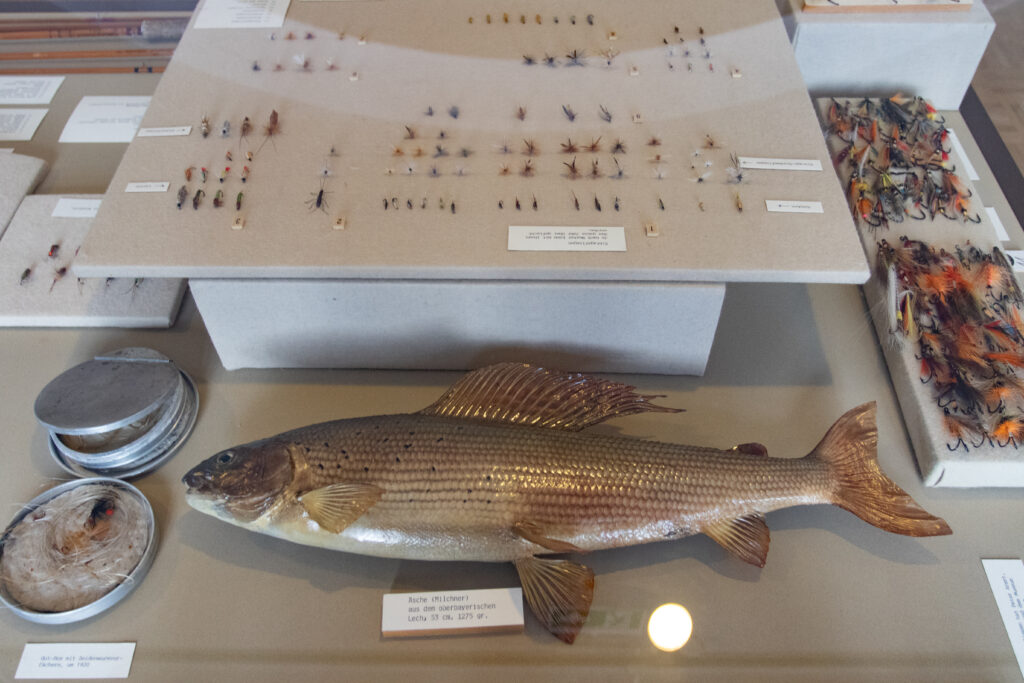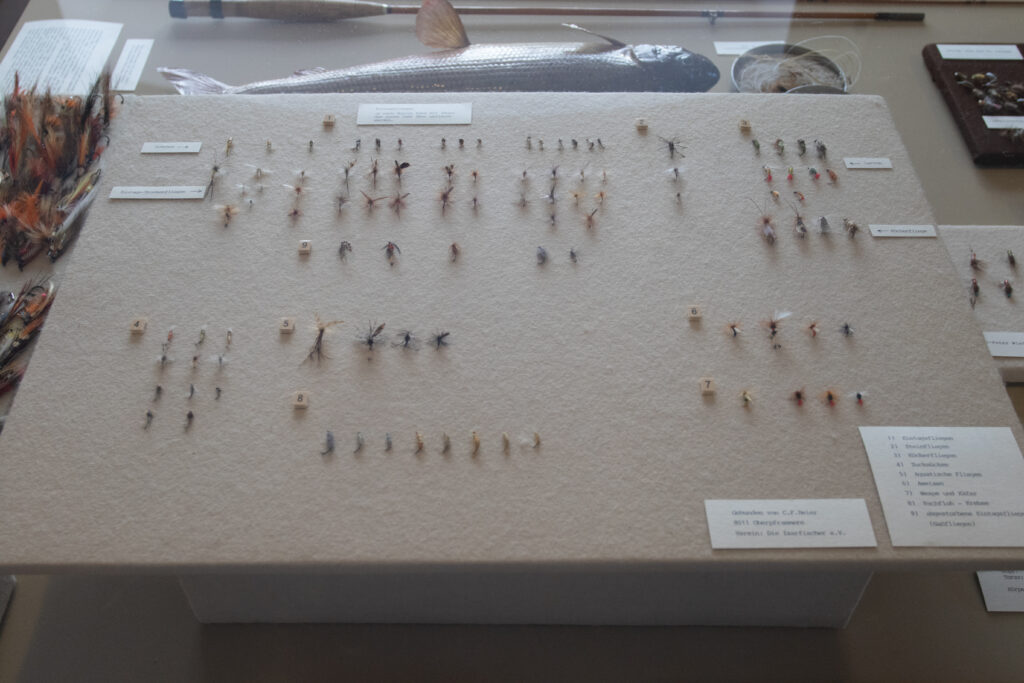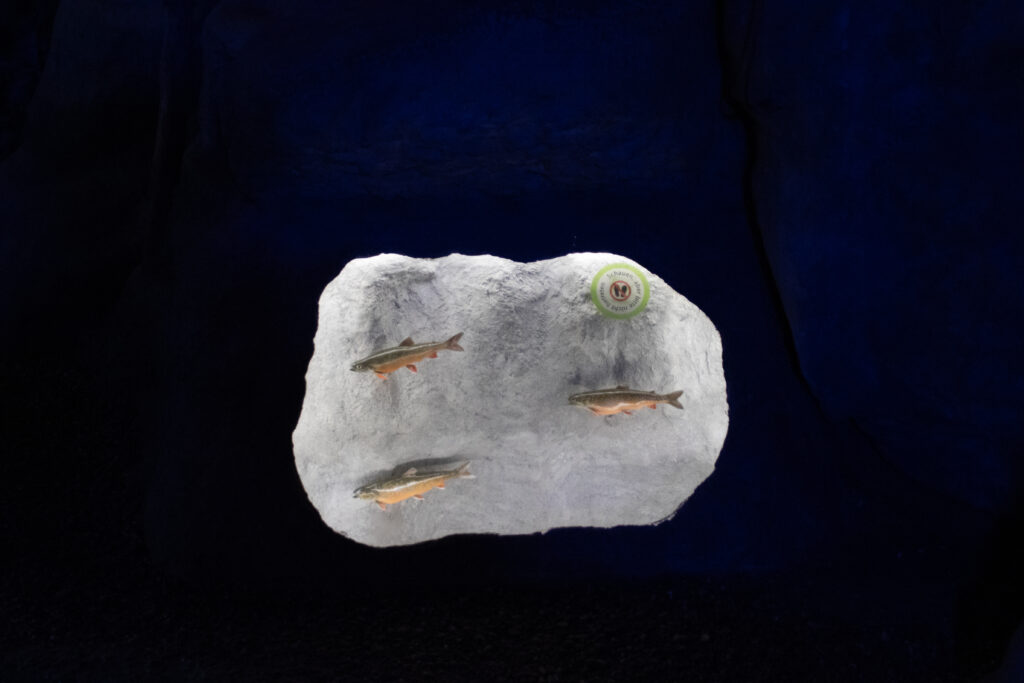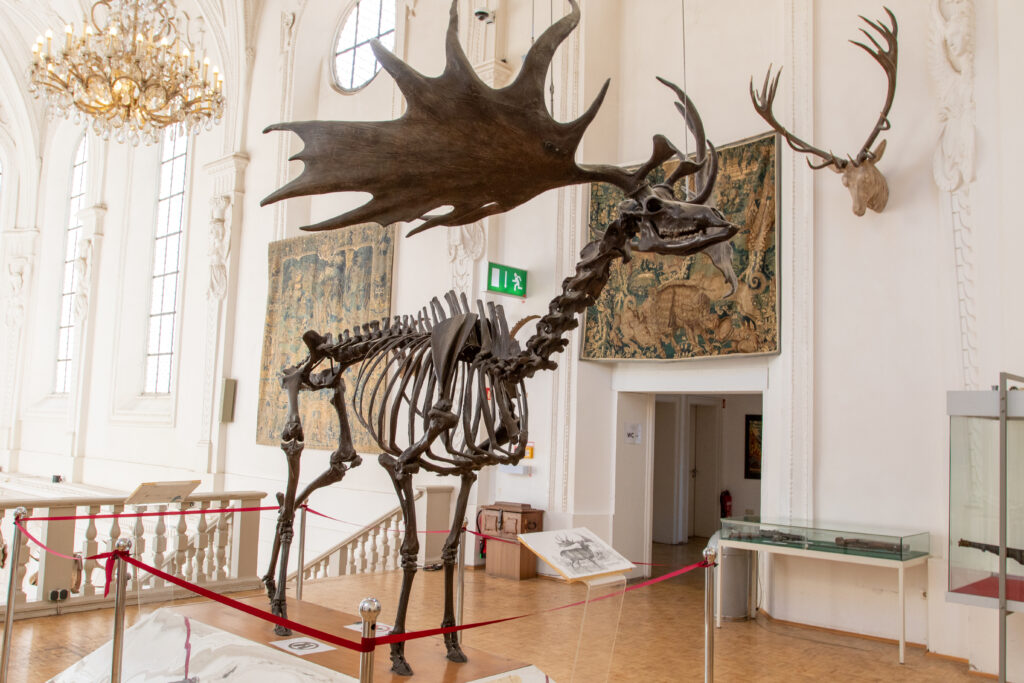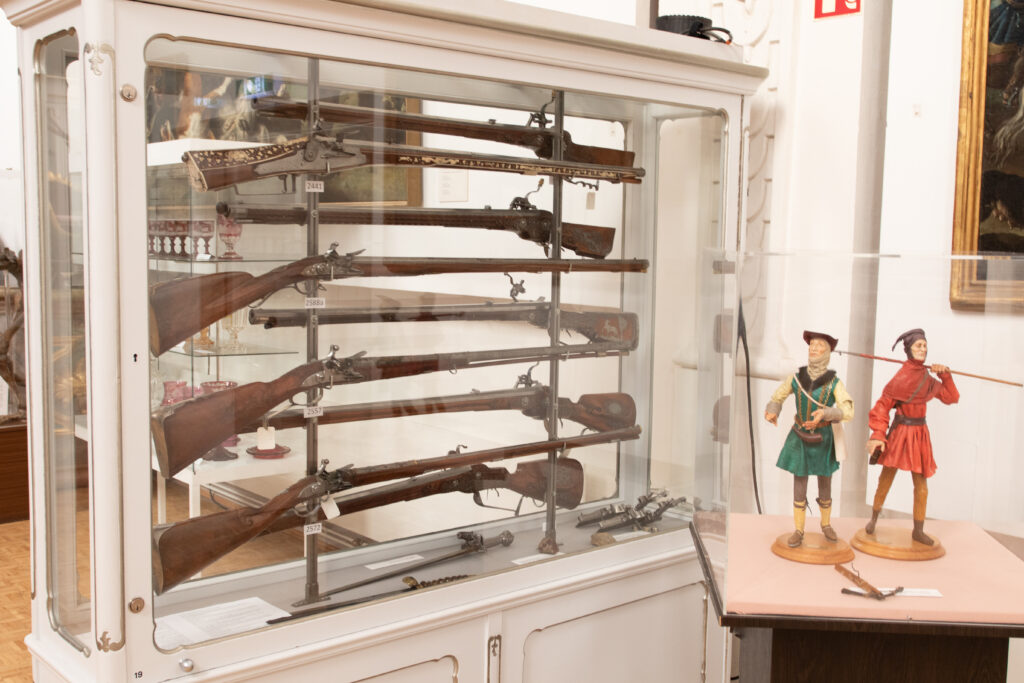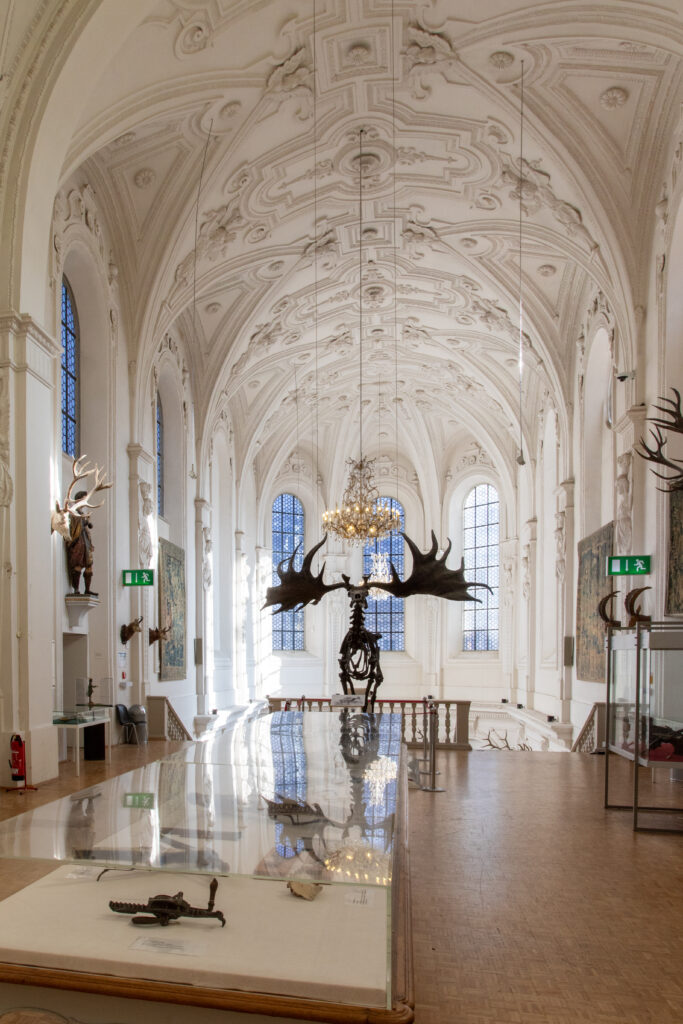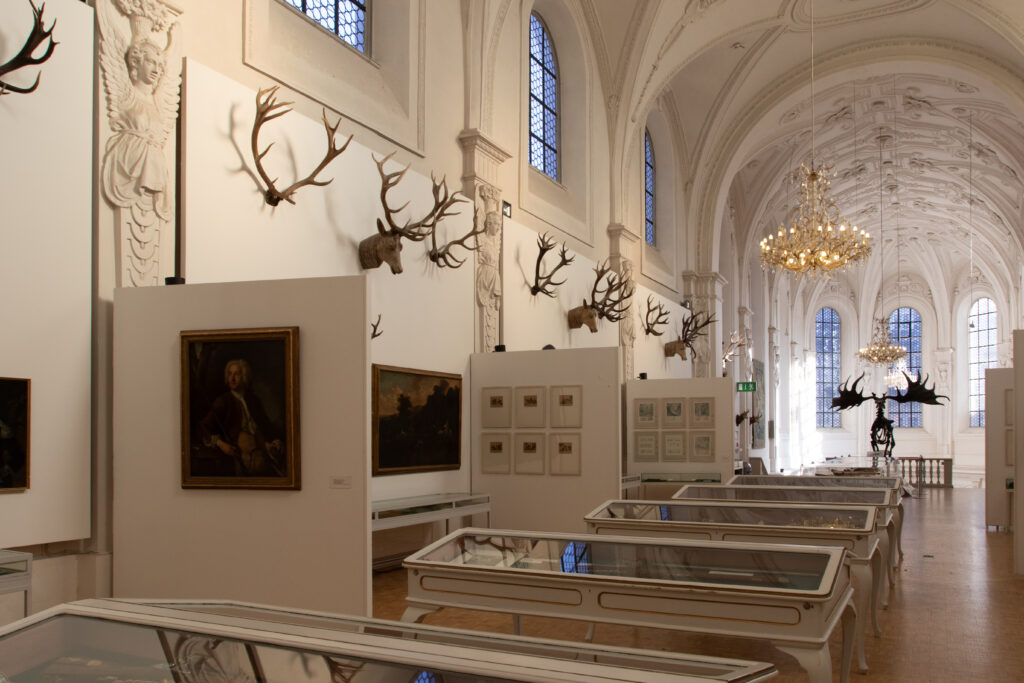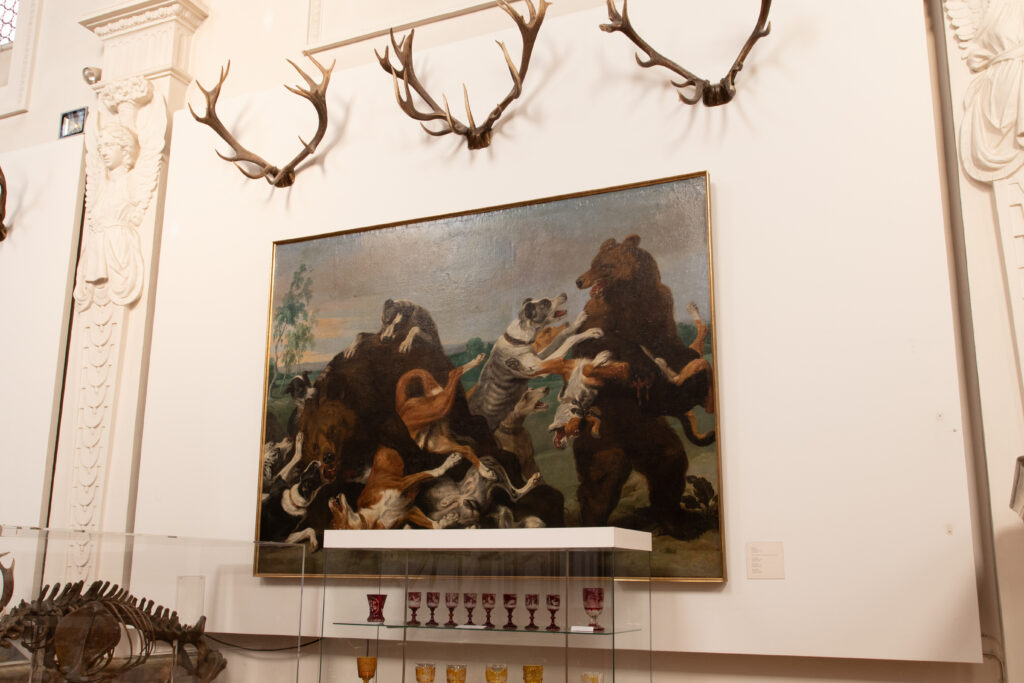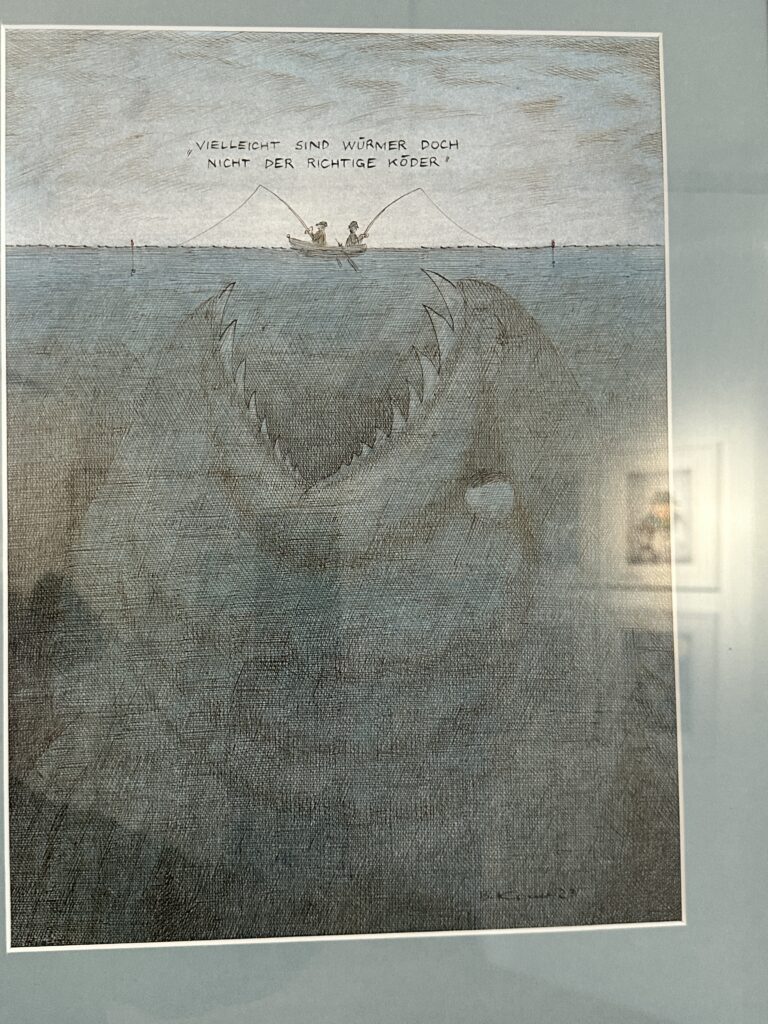Munich
The final day of our trip began with brilliant blue skies – a stark contrast to the greyness that had greeted our arrival in Munich the previous afternoon, and the temperature even promised to reach somewhere towards the higher end of single digits (Celsius that is).
Our first stop this morning was at a café located within a series of pedestrian malls in the underground station of Karlsplatz, after which we did our best to decipher the complex system of underground and suburban rail lines that passed through the station, as well as trying to work out which of the myriad different ticket types we should purchase for the short trip to get us somewhere near our main destination. In the end, we decided to catch the U-Bahn one stop along the line to Hofgarten, which brought us out onto the street just by the Residenz, Munich’s largest city palace and the former home of the monarchs of Bavaria.
Just near the exit of the subway stands the Feldherrnhalle (“Field Marshals’ Hall”), an 1840s monument to the Bavarian army. This monument has a chequered history, marking the scene of a confrontation in 1923, between the Bavarian State Police and the followers of Adolf Hitler in which the Nazi Party attempted to storm the Bavarian Defense Ministry. This was the culmination of the Nazis’ failed coup attempt to take over the Bavarian State, commonly referred to as the Beer Hall Putsch. Although the monument has since been restored to its pre-war state, during the war years it housed a memorial to the Nazis killed during the failed putsch. As such, it’s still controversially used as a staging point for neo Nazi and Fascist rallies on occasion.
The Residenz is a massive, sprawling complex of buildings that spans the entire city block. There are guided tours available, which we might look at doing if we’re ever in Munich again, but on this occasion we had more important places to be. We headed off through what is obviously one of the more affluent areas of Munich, past storefronts for all the major brands including Louis Vuitton, Prada, Rolex, and Yves St Laurent to name a few.
A few blocks away we came to a small, cobbled laneway that hosted several brewhouses and cafés, including an Irish pub and the Hard Rock Café, where people were already milling around, despite it not quite being 11:00 am. We watched as groups of lads arrived in their lederhosen and other Bavarian garb to join the throngs of tourists already assembling for opening hour at one of Munich’s most famous spots, the Hofbräuhaus.
As the doors swung open we made our way (quite orderly it may surprise you to learn) to the scores of wooden benches that fill the cavernous space of the main hall. Dozens of waiters were ready at hand to take orders, and within a few minutes we had a couple of beers and a plate of sausages and sauerkraut sitting in front of us. Rowdy, the tour mascot, came out of the bag for a few photo ops, and we even managed to snag a giant pretzel from one of the ladies wandering around with baskets full of them.
I opted for a dark ale, while Vanessa went with a lager. This being just after 11:00 am though, we chickened out and only went with a “small” beer each, a mere 500ml in size. As we finished our meal and paid for everything, I glanced over to my right, where the lederhosen lads were already onto their third round for the morning, swiftly knocking back their large ales that clocked in at a hefty one litre apiece. We decided to skedaddle before things got really messy.
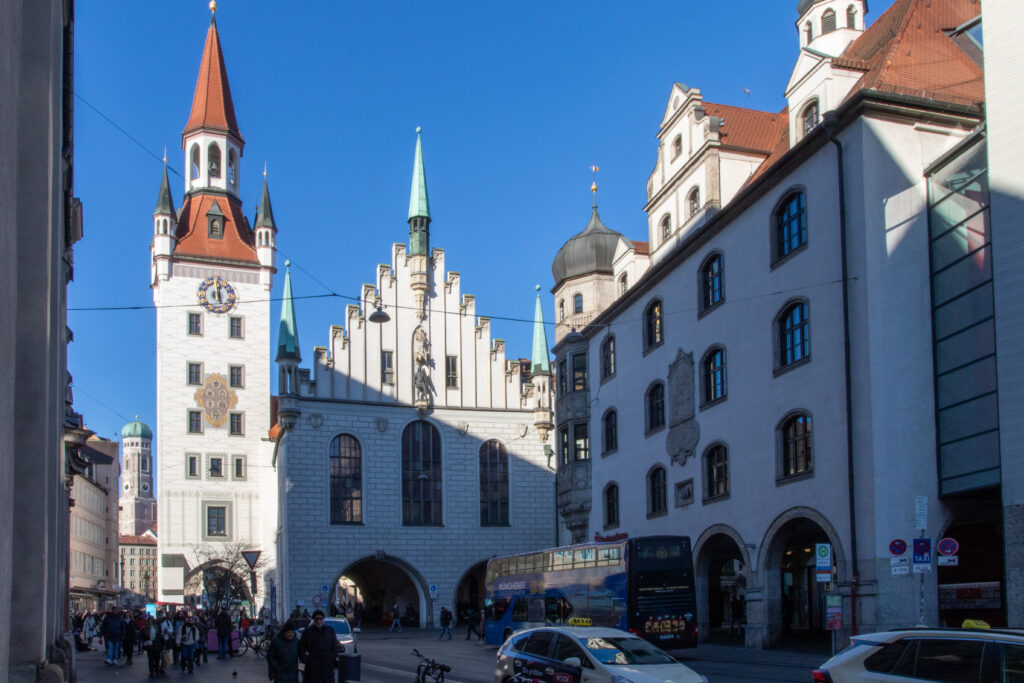
The rest of the day was dedicated to souvenir shopping and sightseeing. By some sheer fluke of timing, we managed to find ourselves back in the Marienplatz right on the stroke of midday, which meant we were just in time to see the Rathaus-Glockenspiel display. As with all of these things that we’ve seen, they turn out to be slightly less than underwhelming, but I did manage to record a little 16-second grab that I’ve posted below. Apparently the full show runs for about 9 minutes, but 16 seconds is about how long it took for me to get sick of the jostling crowd in the square, so we were soon off again.
Our next stop was the Catholic Frauenkirche, a 15th Century gothic church that was also heavily damaged and rebuilt after World War II. While nowhere near as impressive internally as St Michael’s nearby, it’s still an amazing structure. Aside from an impressive carved timber cenotaph dedicated to Holy Roman Emporer Louis IV (whose remains are buried in the crypt below) there is also a quirky attraction just inside the church foyer known as the Teufelstritt, or Devil’s Footstep, at the entrance. This is a black mark resembling a footprint, which according to legend was where the devil stood when he curiously regarded and ridiculed the ‘windowless’ church. Unfortunately a different kind of devil was standing there on this occasion, one holding a paddle bearing the logo of a well known river cruise line, and as they were showing no sign of moving on any time soon, I gave up trying to photograph the footprint, and we headed back outside. You’ll just have to look it up for yourself, or take my word for it.
Before describing our final stop for the day, I should issue a trigger warning, because the remaining section of the blog contains lots of images of taxidermized animals, firearms, and information about hunting. That’s because we decided to take a look at the Deutsches Jagd und Fischereimuseum (German Hunting and Fishing Museum), which at first seems an odd choice of topic for a museum on the main tourist route, but understandable when you consider the long tradition of hunting (and fishing) going back for centuries in Bavarian and European society.
To be honest, I wasn’t expecting much more than the kitsch wax models that we’d seen in the torture museum way back in Český Krumlov, but by contrast the displays in this museum are quite stunning, and very informative showing local animals in settings where you would normally expect to find them.
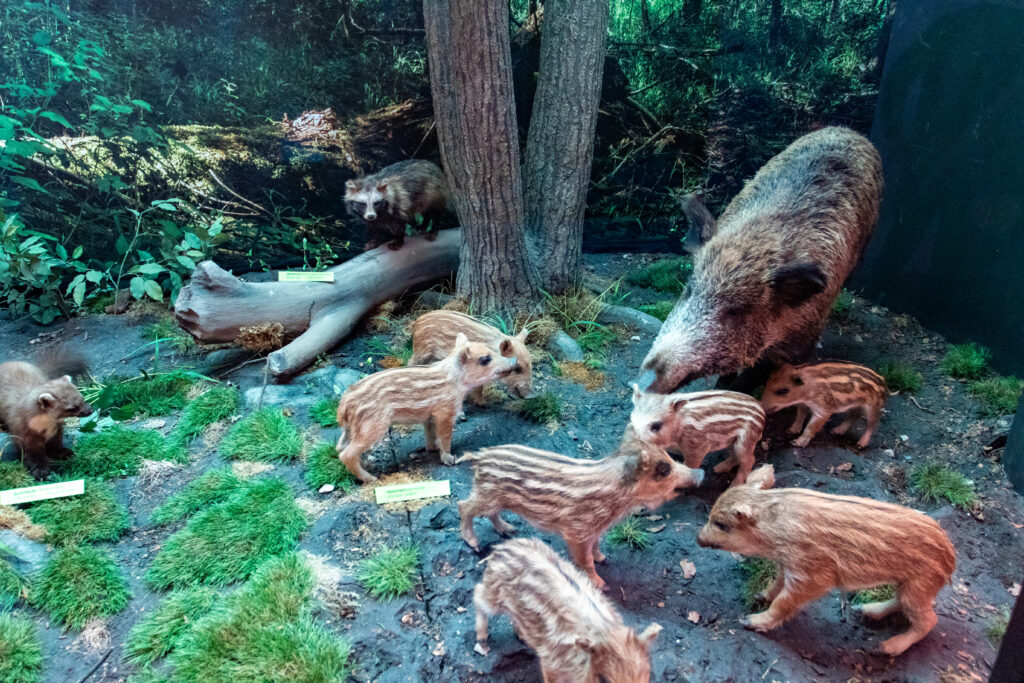
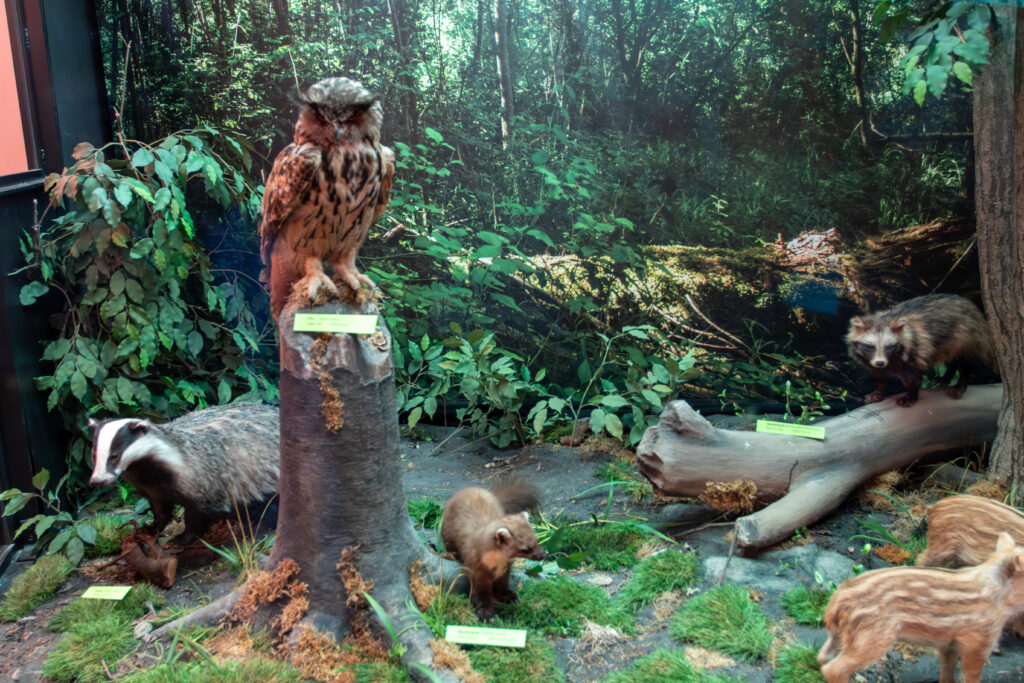
There was also a display in one room of “Wolpertingers” – mythical creatures said to inhabit the Bavarian woods, made up from parts of various animals – for example, a hare with deer antlers, eagle talons and large fangs. Funnily enough, as Vanessa and I approached it, our first thought was that it was a display of platypus, as one of the creatures was a beaver with a duck’s feet and bill. Unfortunately the glare on the glass on that display made it impossible to get a clear photo.
Sadly, while most of the opening section had dual German and English information cards, that inexplicably ceased once we got into the fishing section. Which is a real shame, because this section obviously contained a lot of history, with fish traps, bone hooks and gut lines dating back to prehistoric times. As a fly fisherman myself, I was particularly taken with the displays of old flies, tackle, and split cane fly rods. I was also taken with the intricacy of some of the carved bone fish hooks. The thought of some primitive ancestor spending hours fashioning a tiny hook from animal bone or deer antler, only to get it snagged on a rock or bitten off by a pike, put a lot of things into perspective as to how little regard we have nowadays about where our food comes from.
The last section, “The White Hall”, contains a huge number of mounts and several full skeletons, including one of an Irish Elk – the largest species of deer ever to have existed. This giant megafauna roamed across Eurasia at the end of the last ice age and would have been extensively hunted by Neanderthals and early Homo Sapiens. It frequently shows up in prehistoric rock art at several locations across Europe.
The museum itself is set inside a stunning building, the former Augustinian Church and monastery of Munich. What impressed me most about the museum though was the way that it wasn’t just about displaying a whole bunch of dead animals, but the way it showed the integration and importance of hunting in all walks of society, dating back millennia. The use of classic artworks around the displays to emphasise this is particularly well done.
In addition to the classical art pieces, there was also a small gallery in a side room dedicated to rotating exhibitions of hunting and fishing related art. The current display features works by a couple of German cartoonists, which pokes some good-natured fun at modern day hunters and fishermen.
We spent a lot longer in the museum than I initially thought we would, and with our arms aching from carrying around a heavy bag full of souvenirs for the folks back home, we decided to head back to the hotel. Our final dinner in Munich was at a local restaurant where Vanessa managed to finally break into double figures for the number of schnitzels consumed on the trip, while I had my second plate of sausages and sauerkraut for the day, which is just what you need when you’re about to spend 26 hours on planes and transiting through airports over the following day and a bit.
